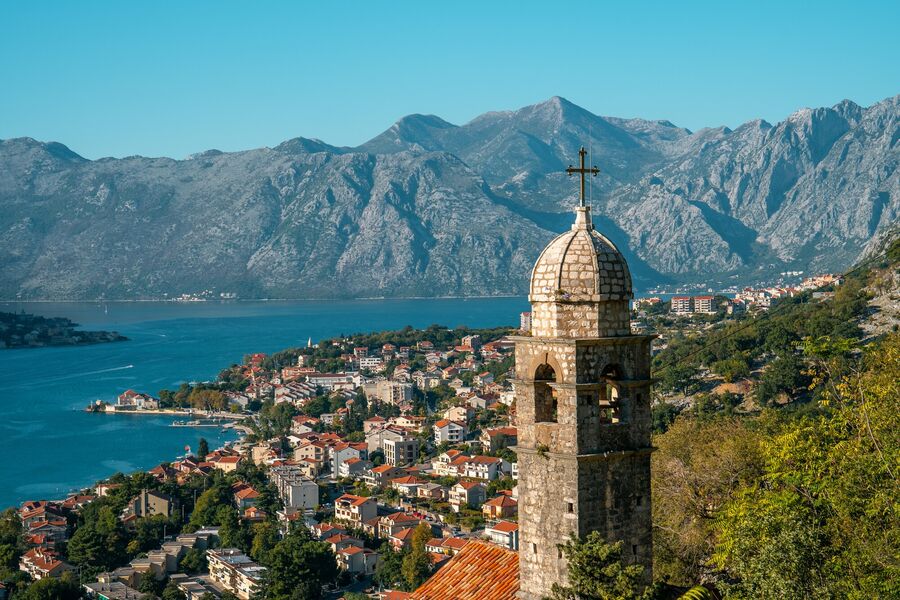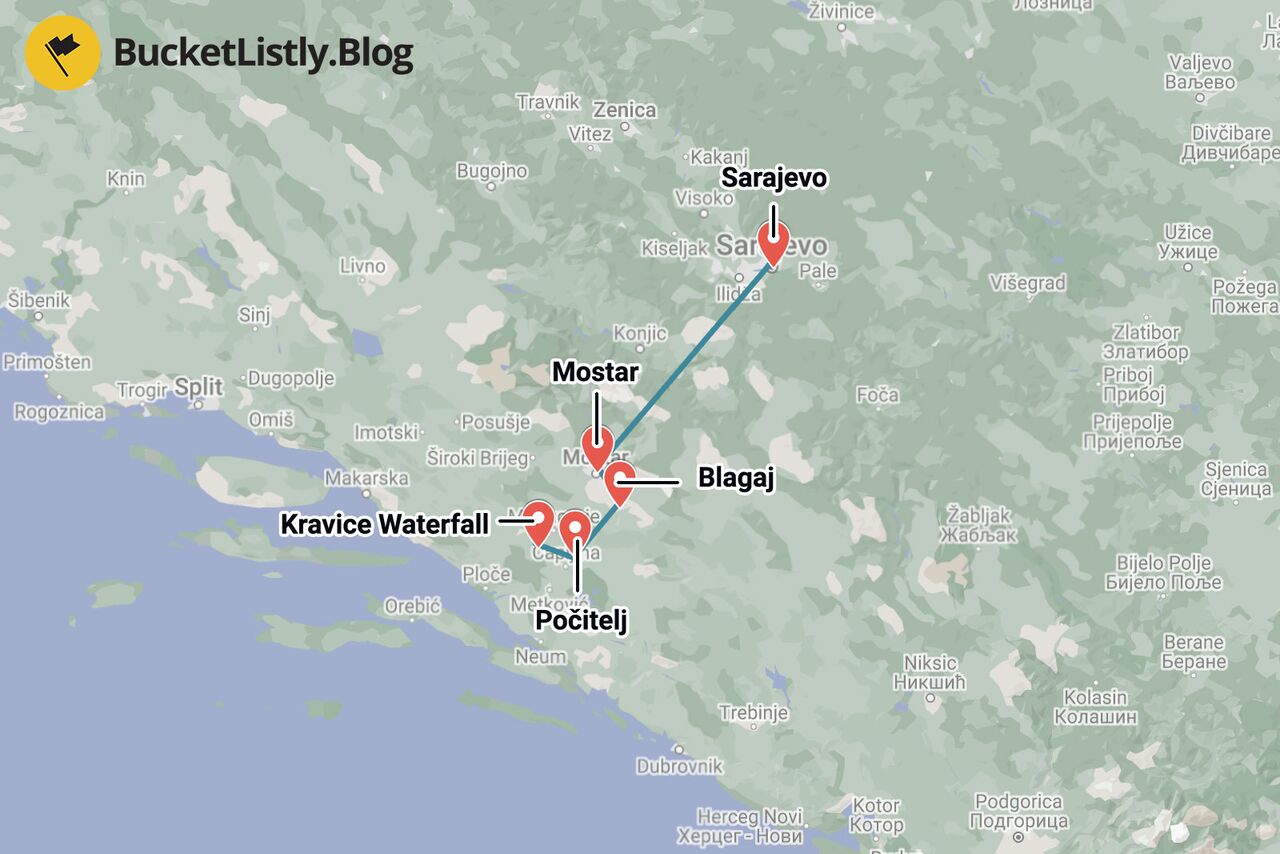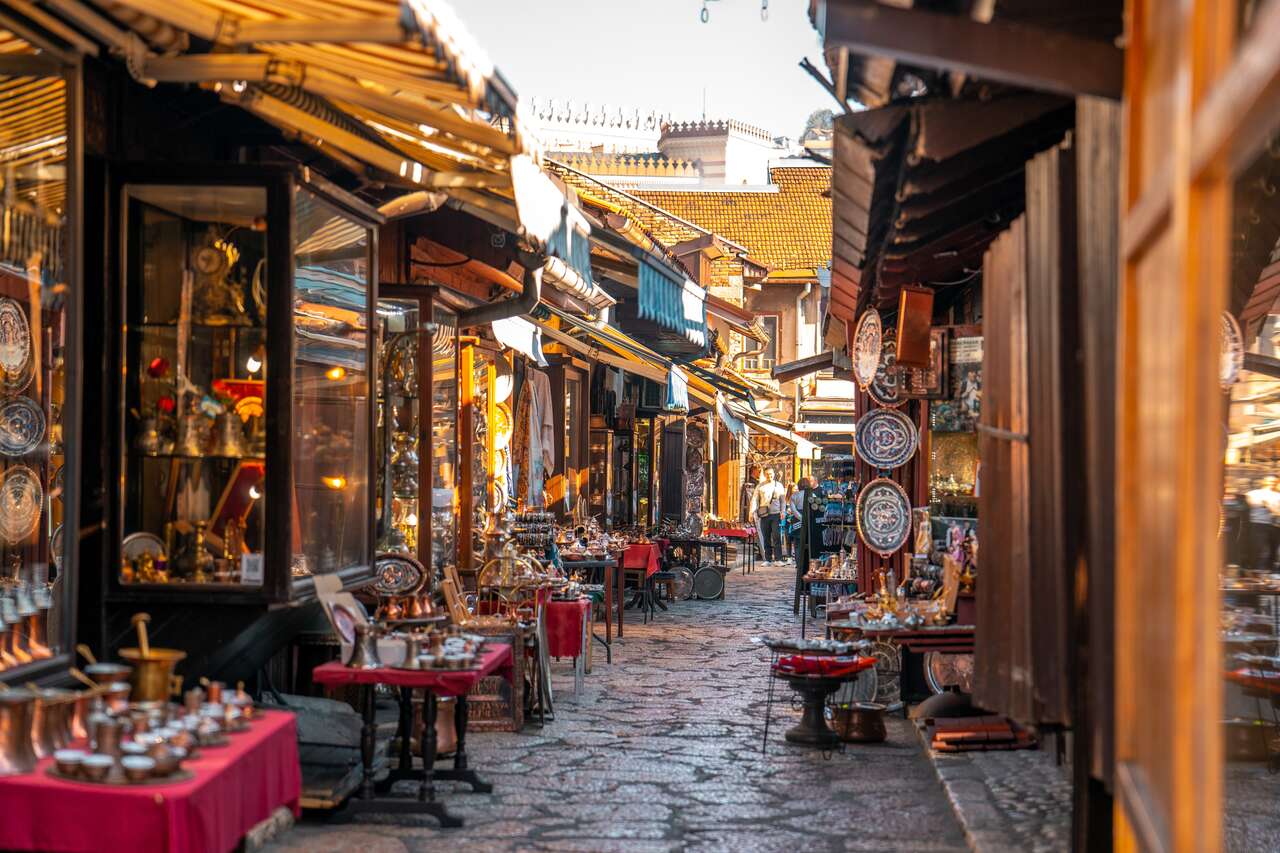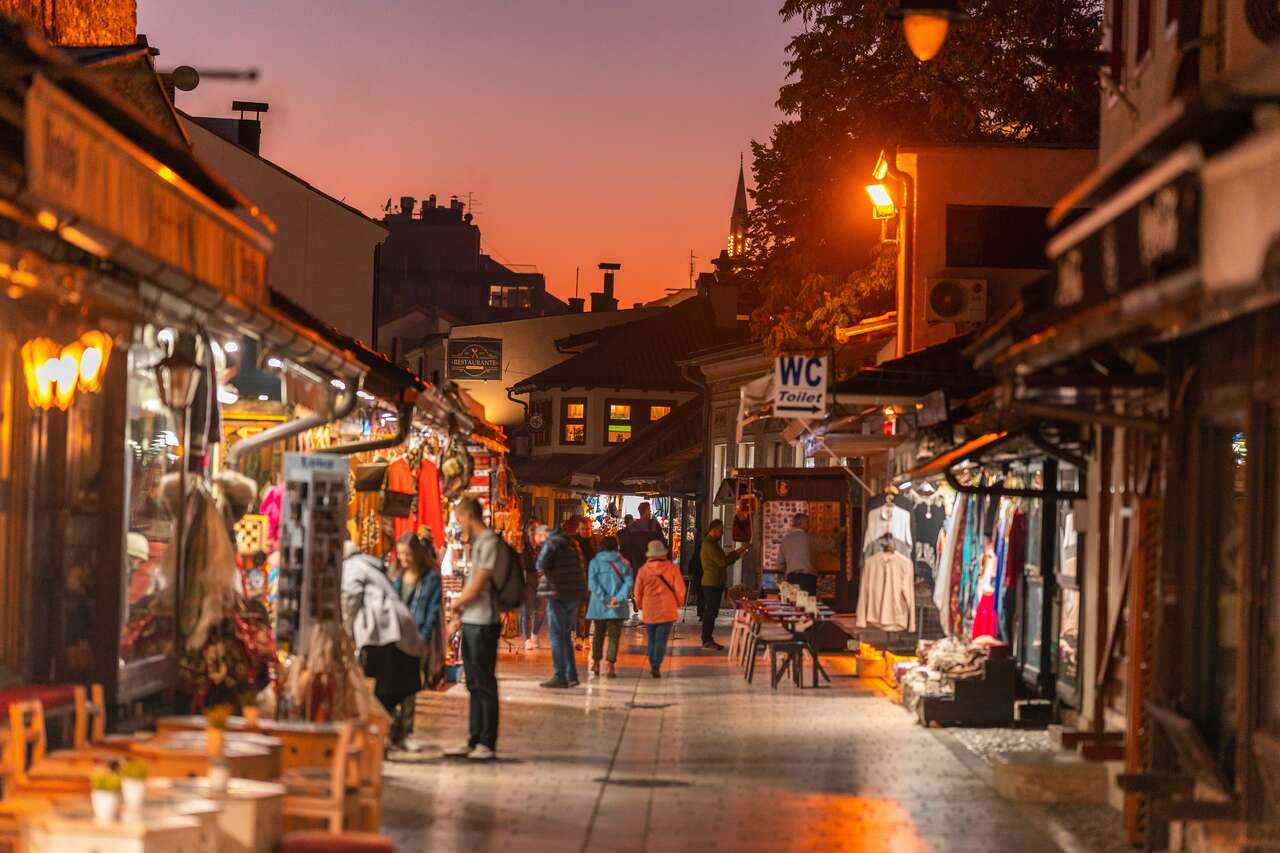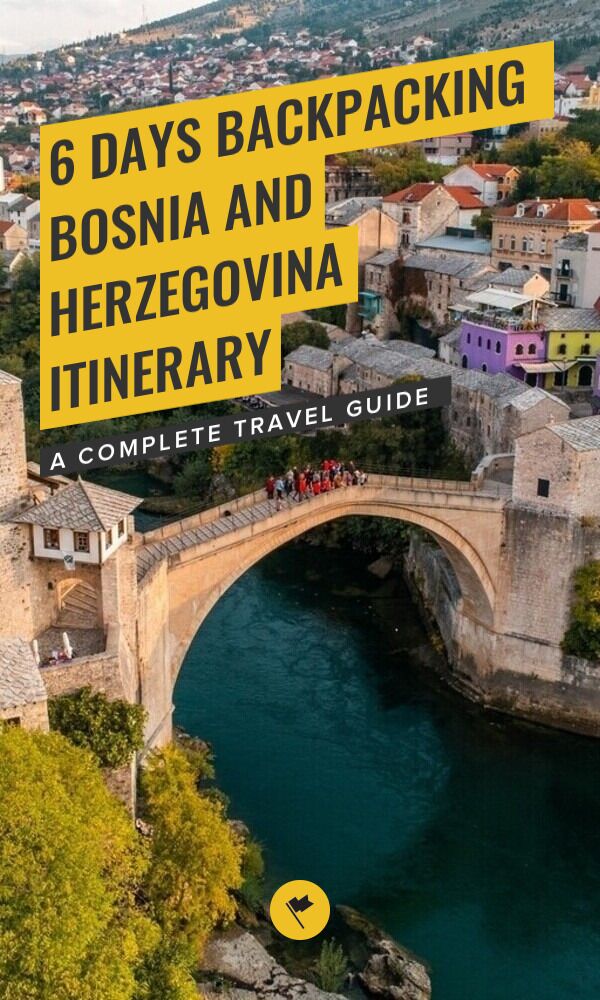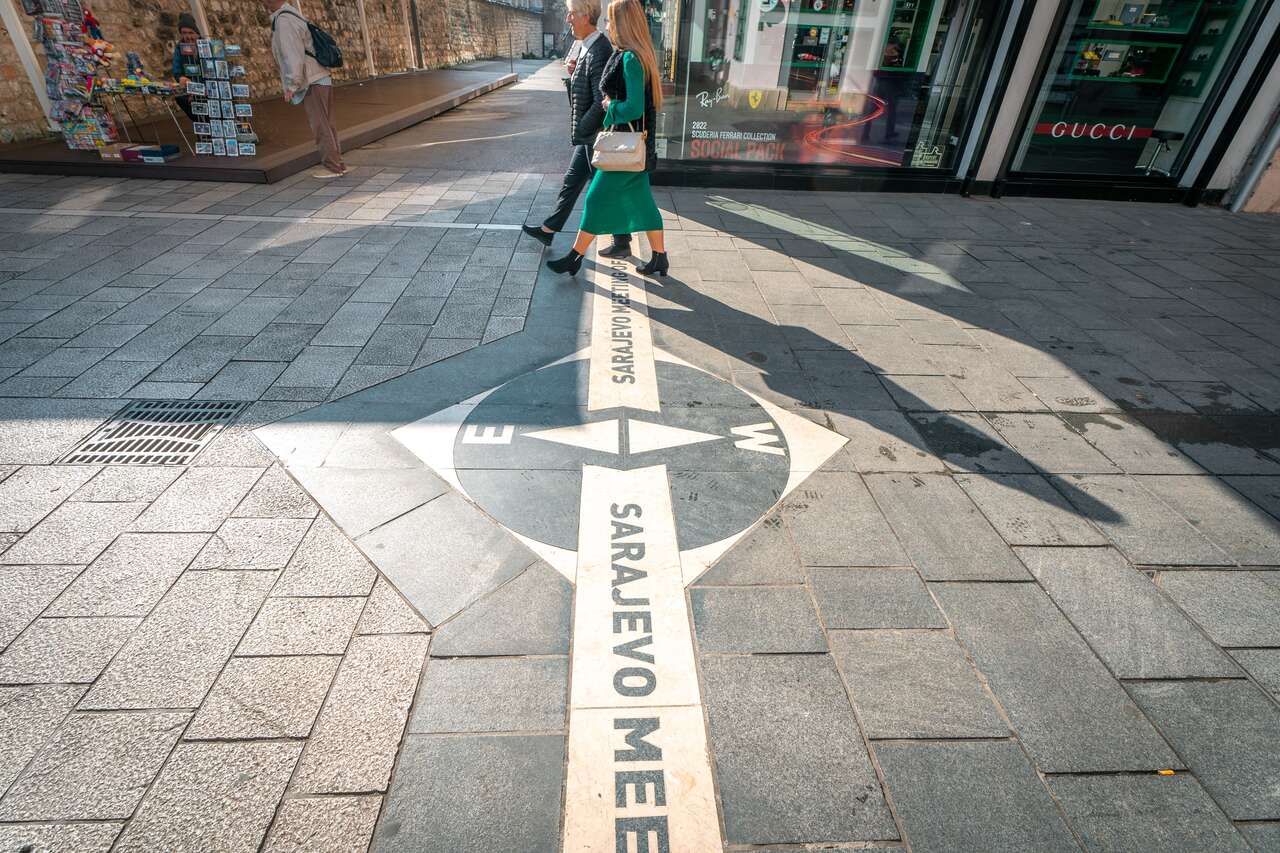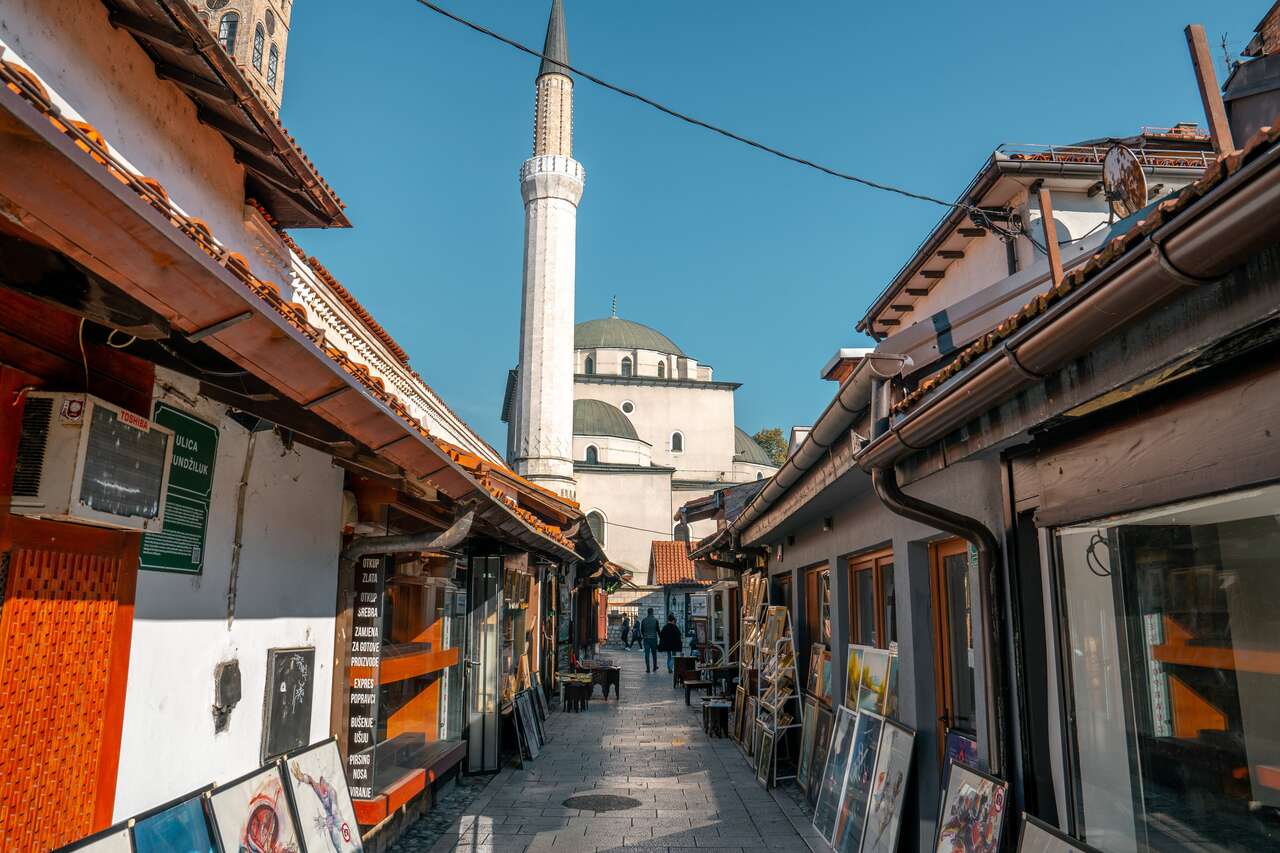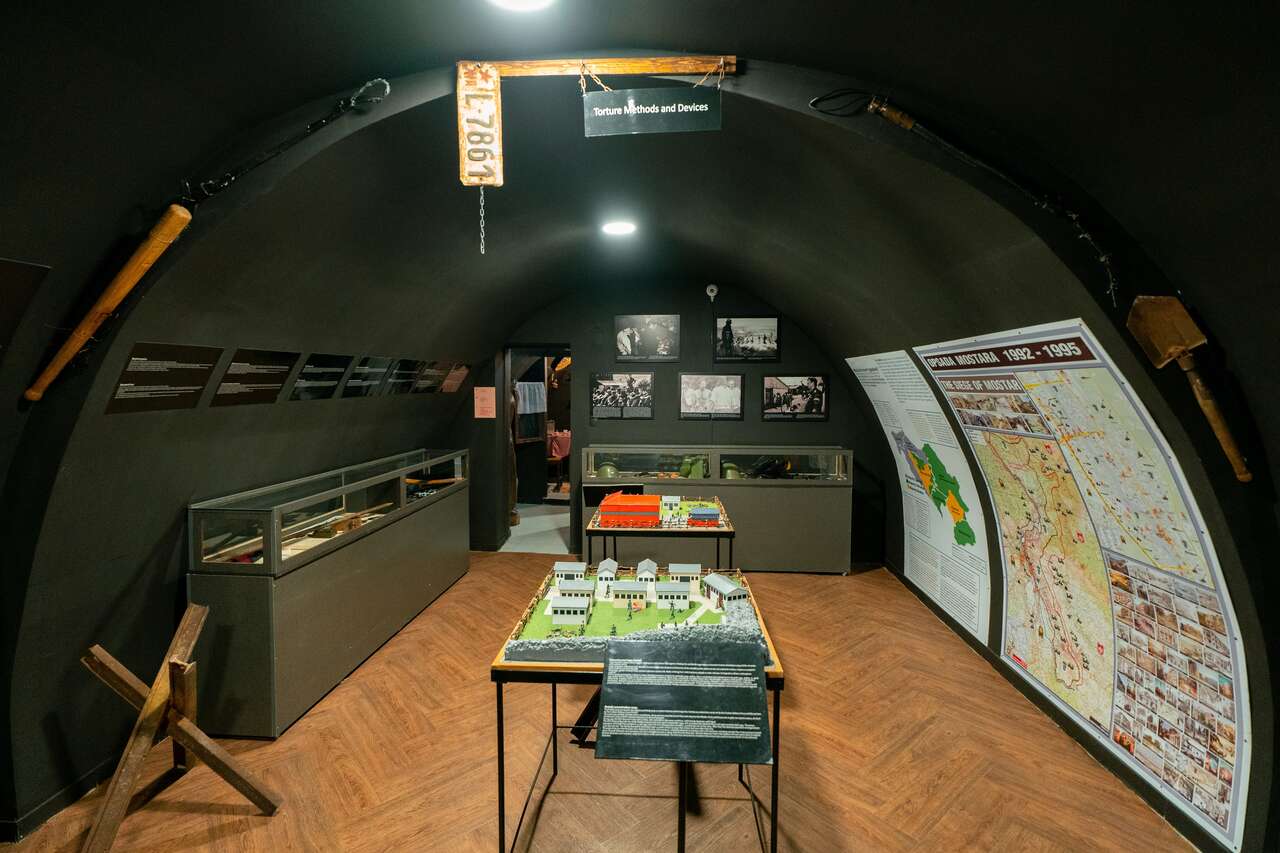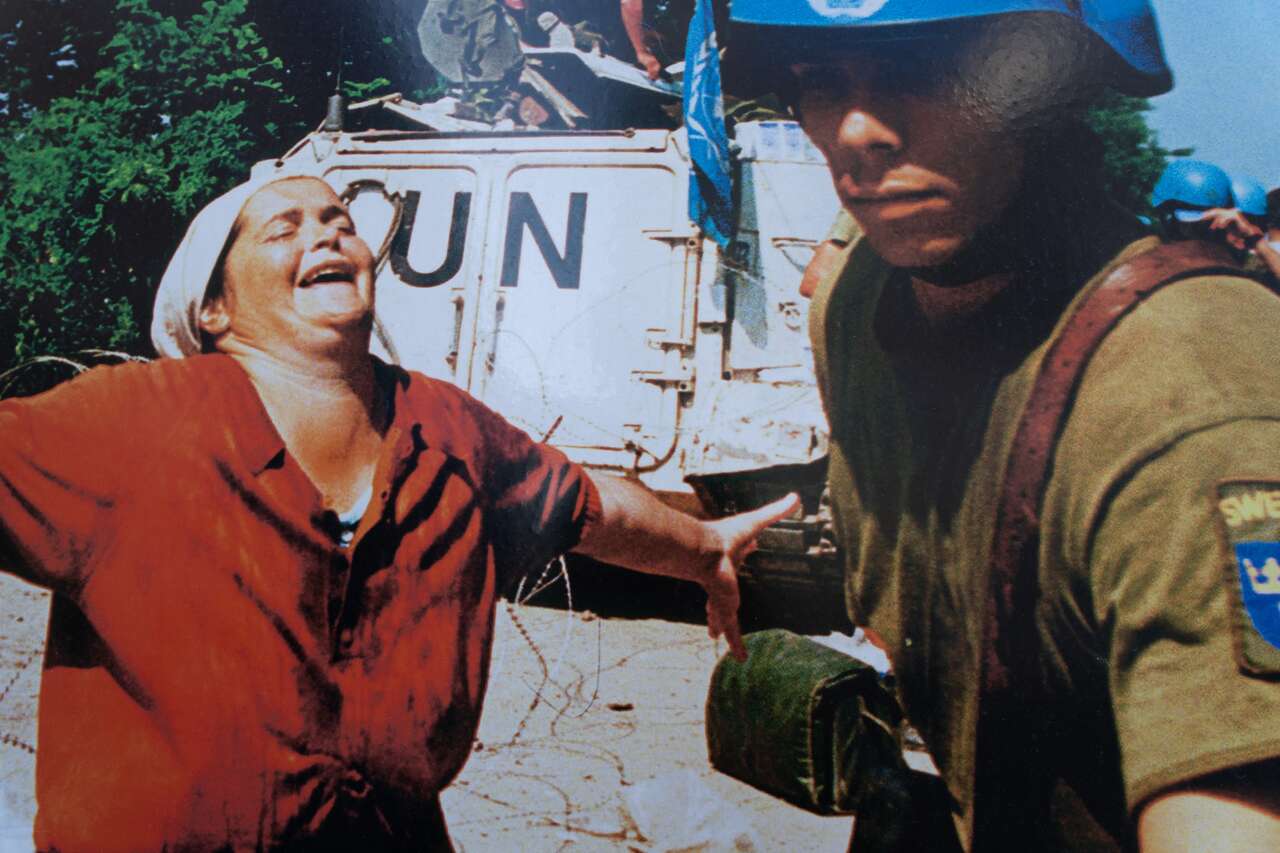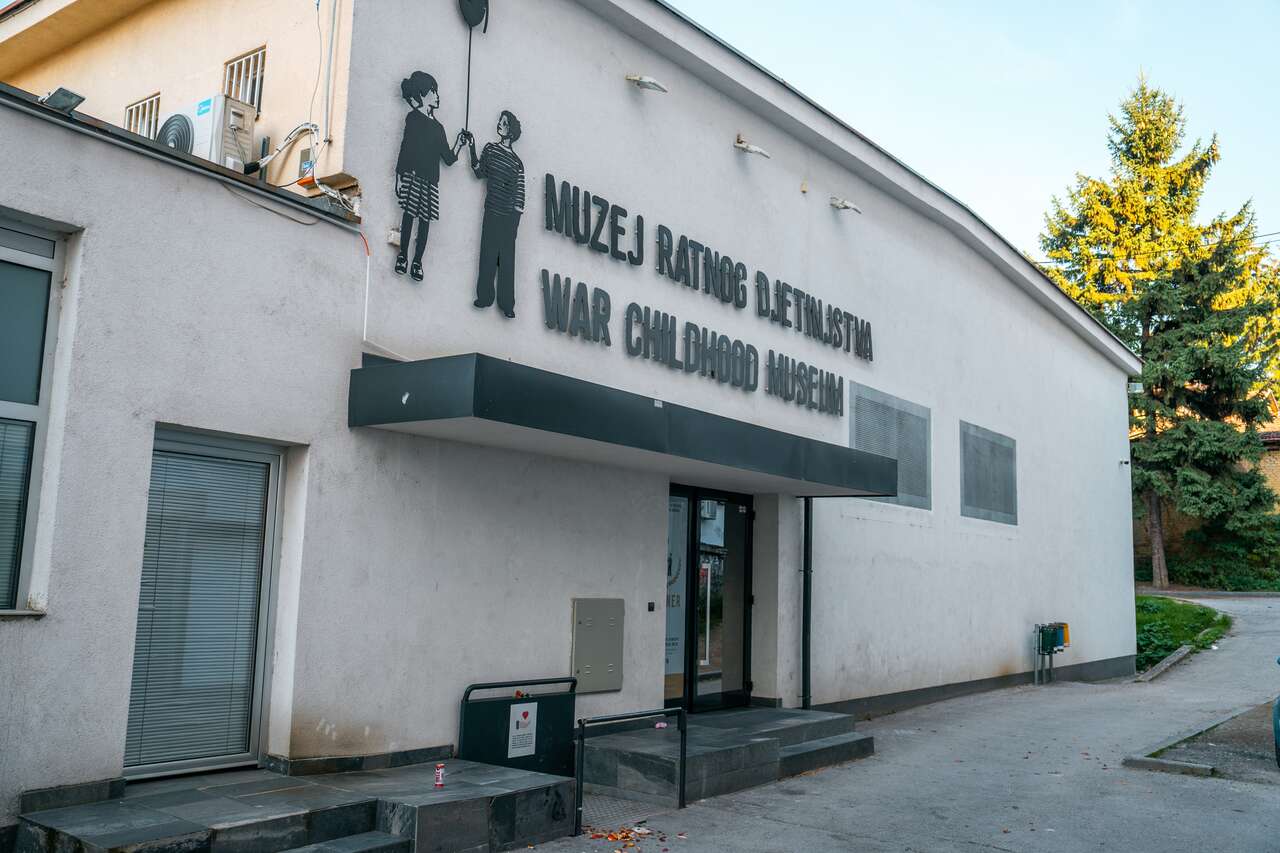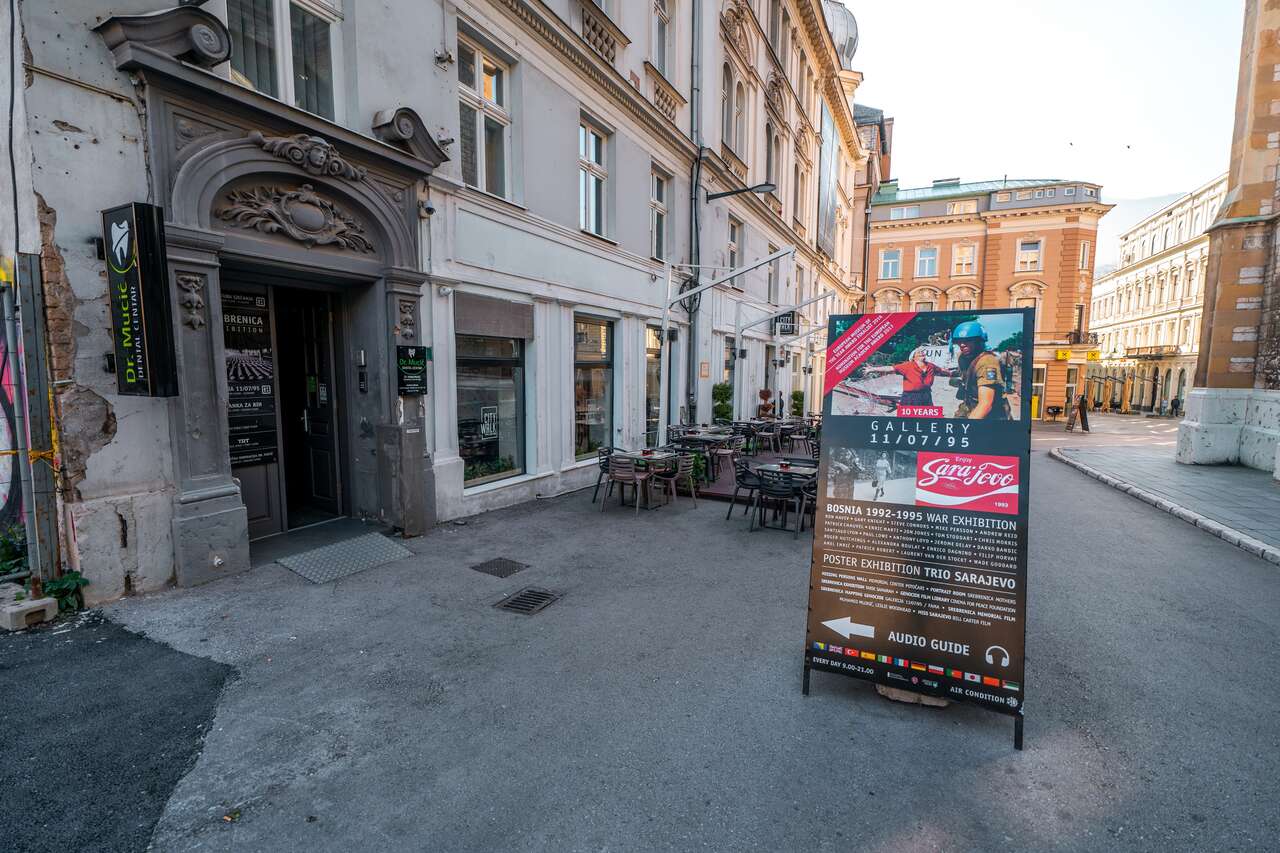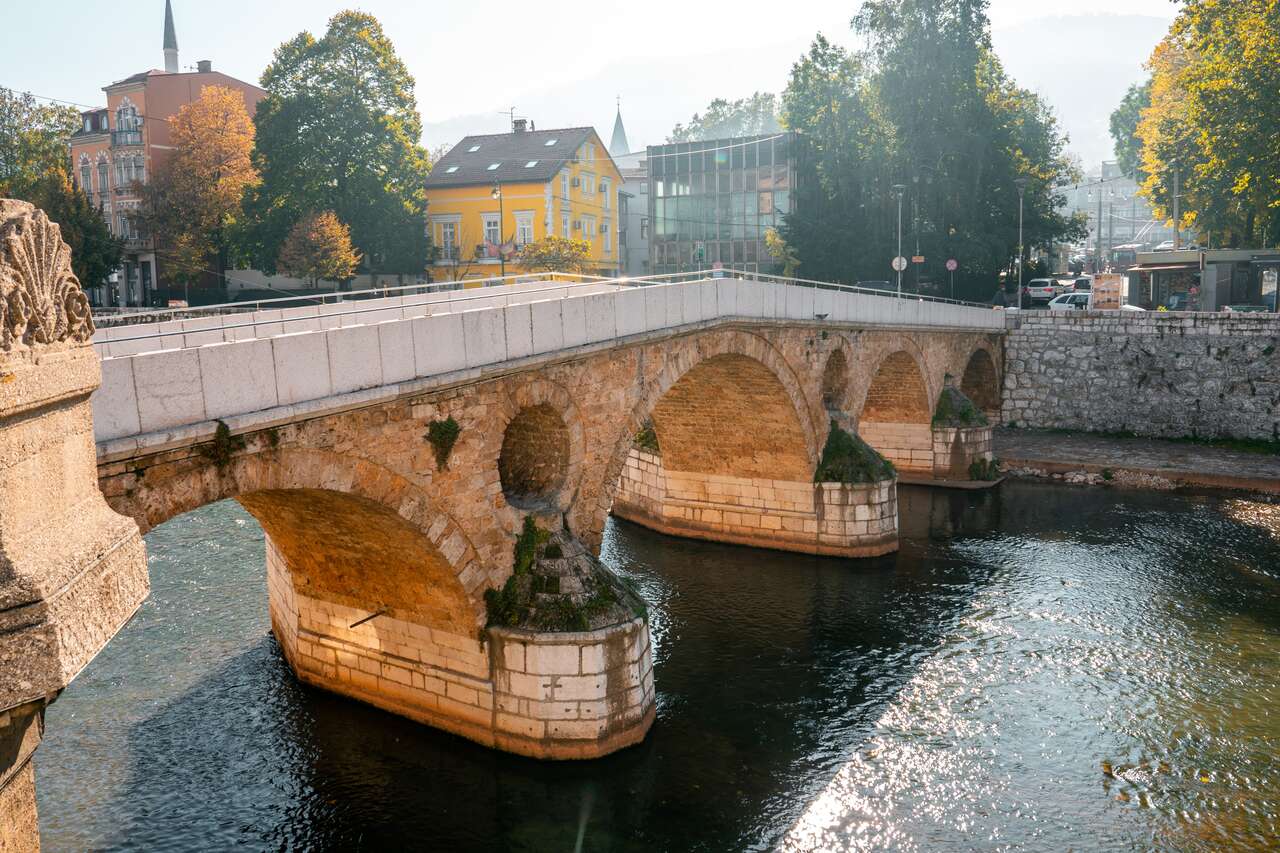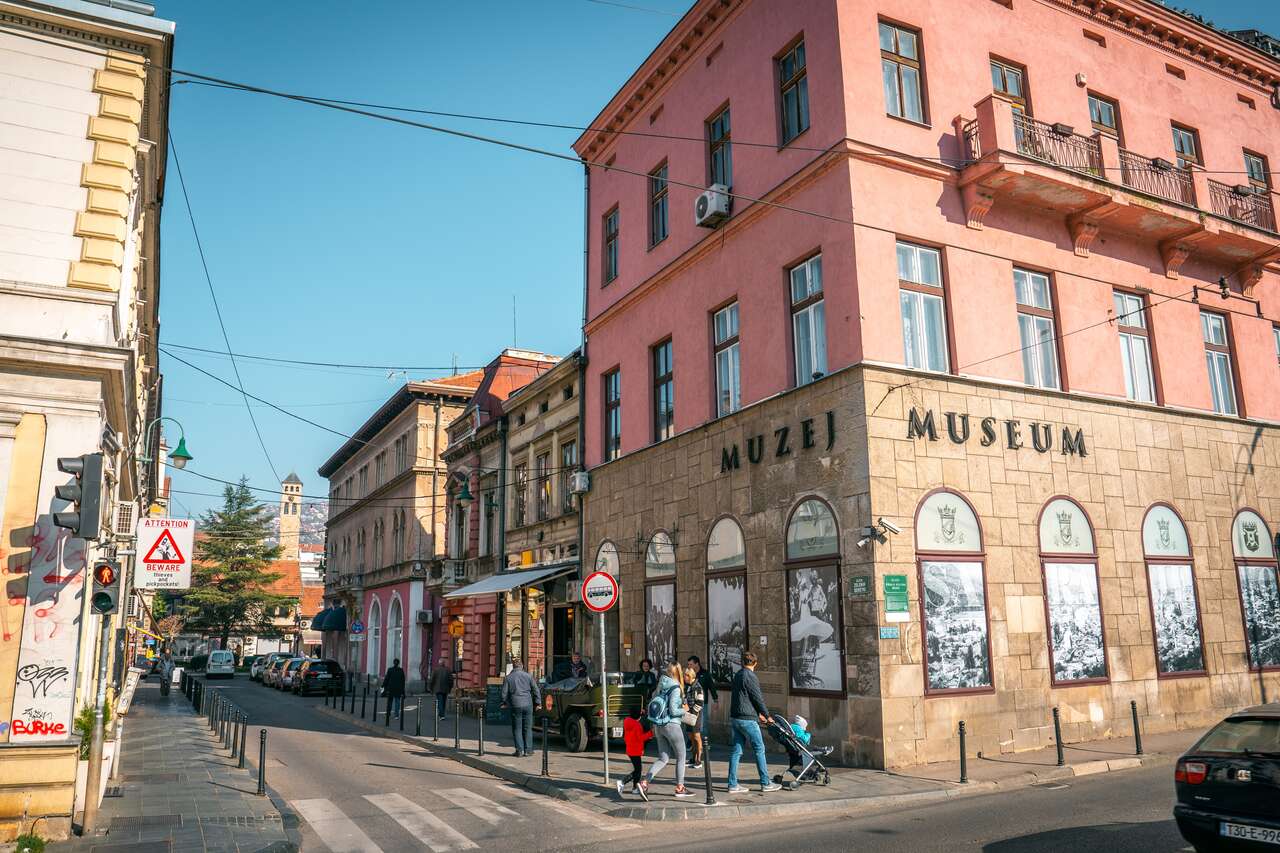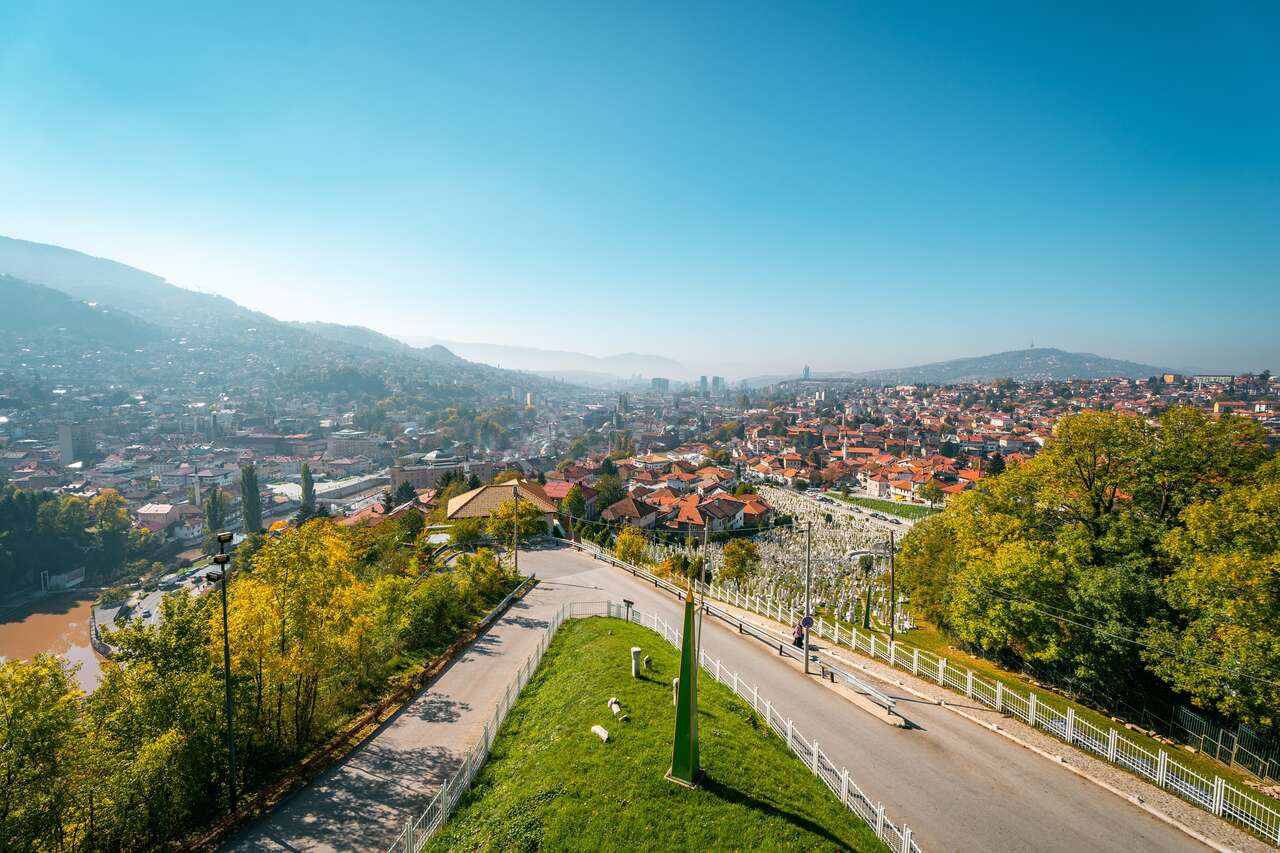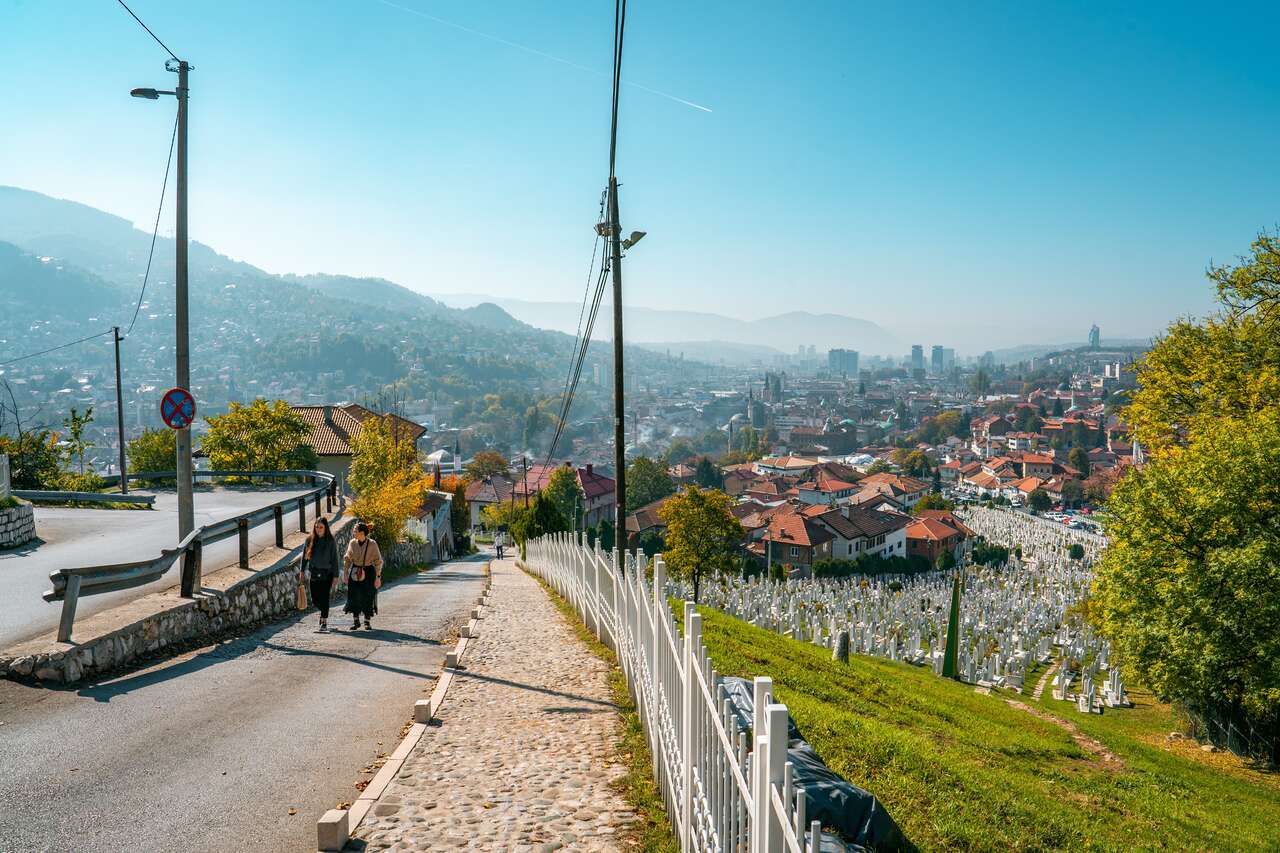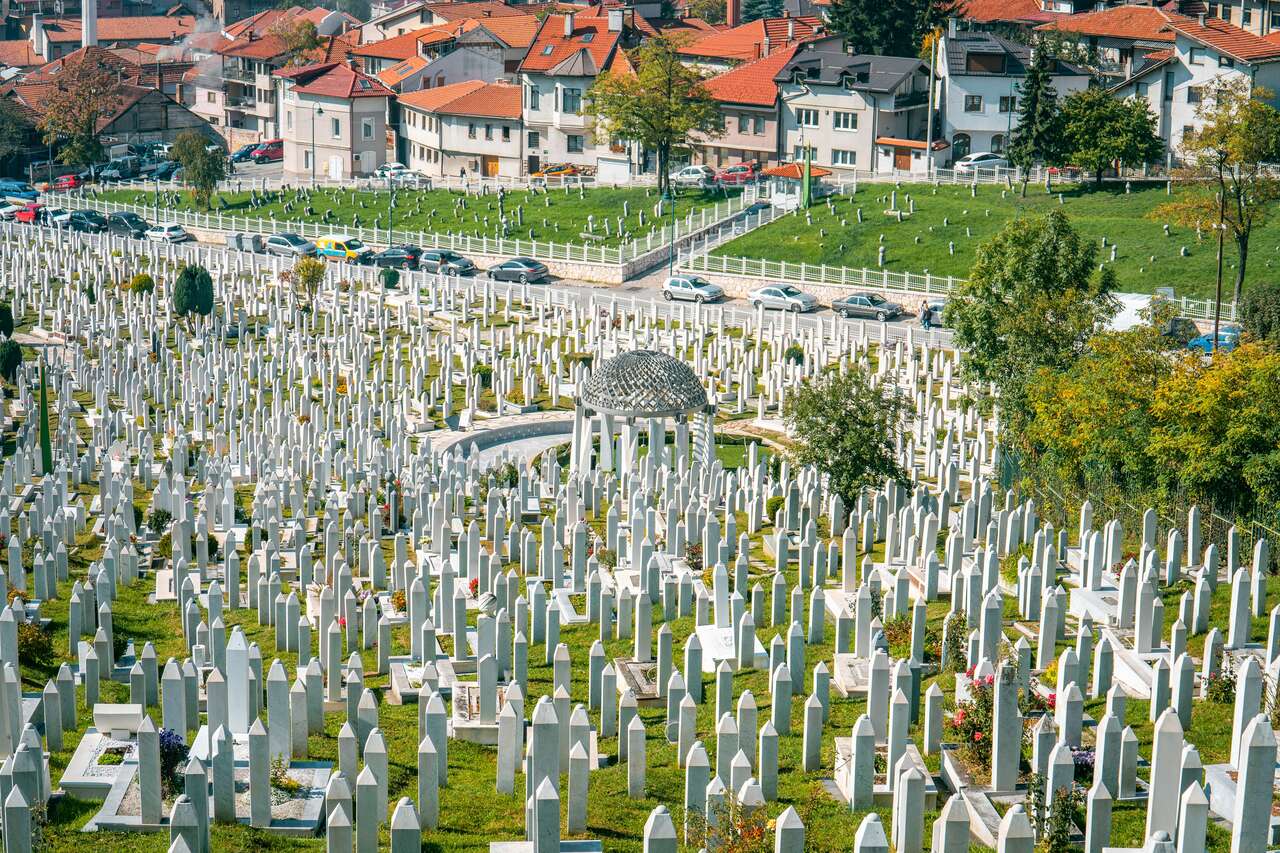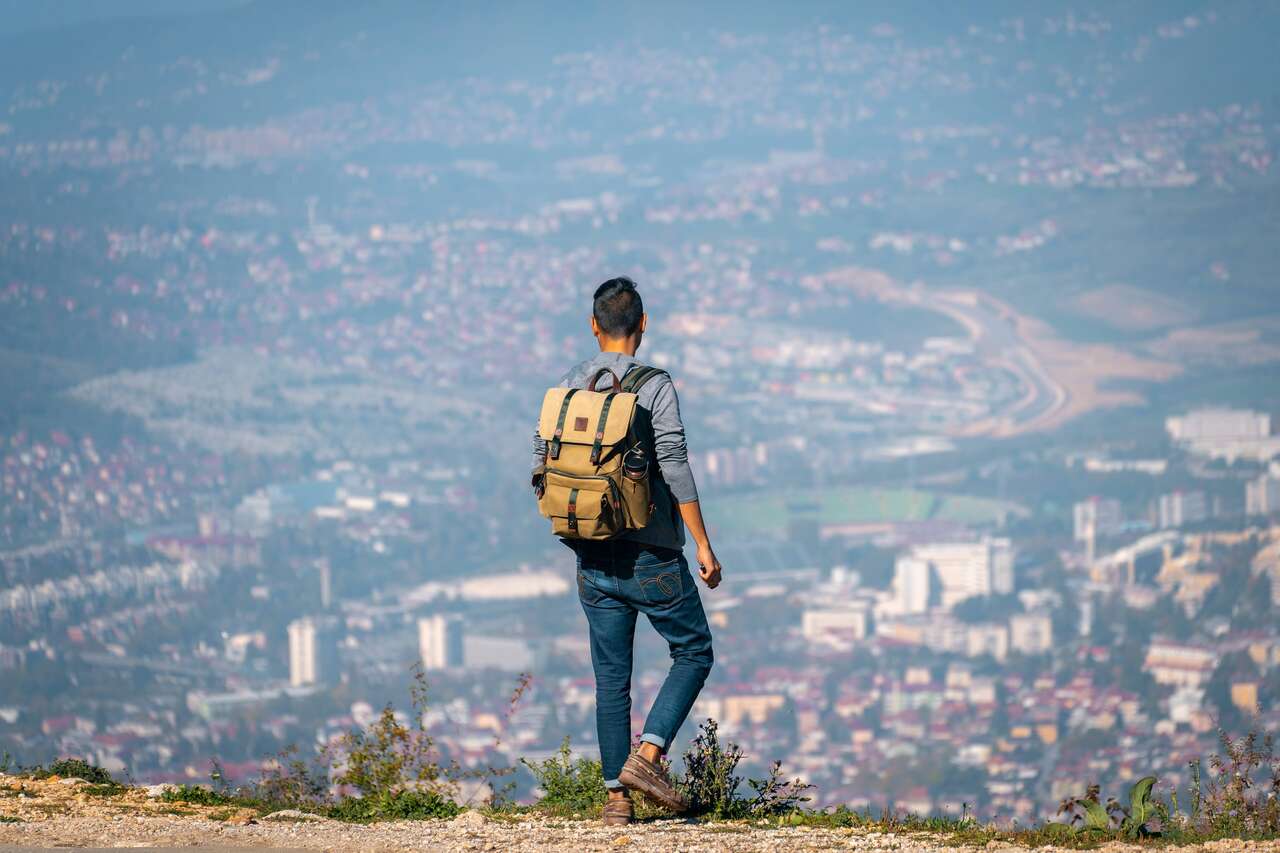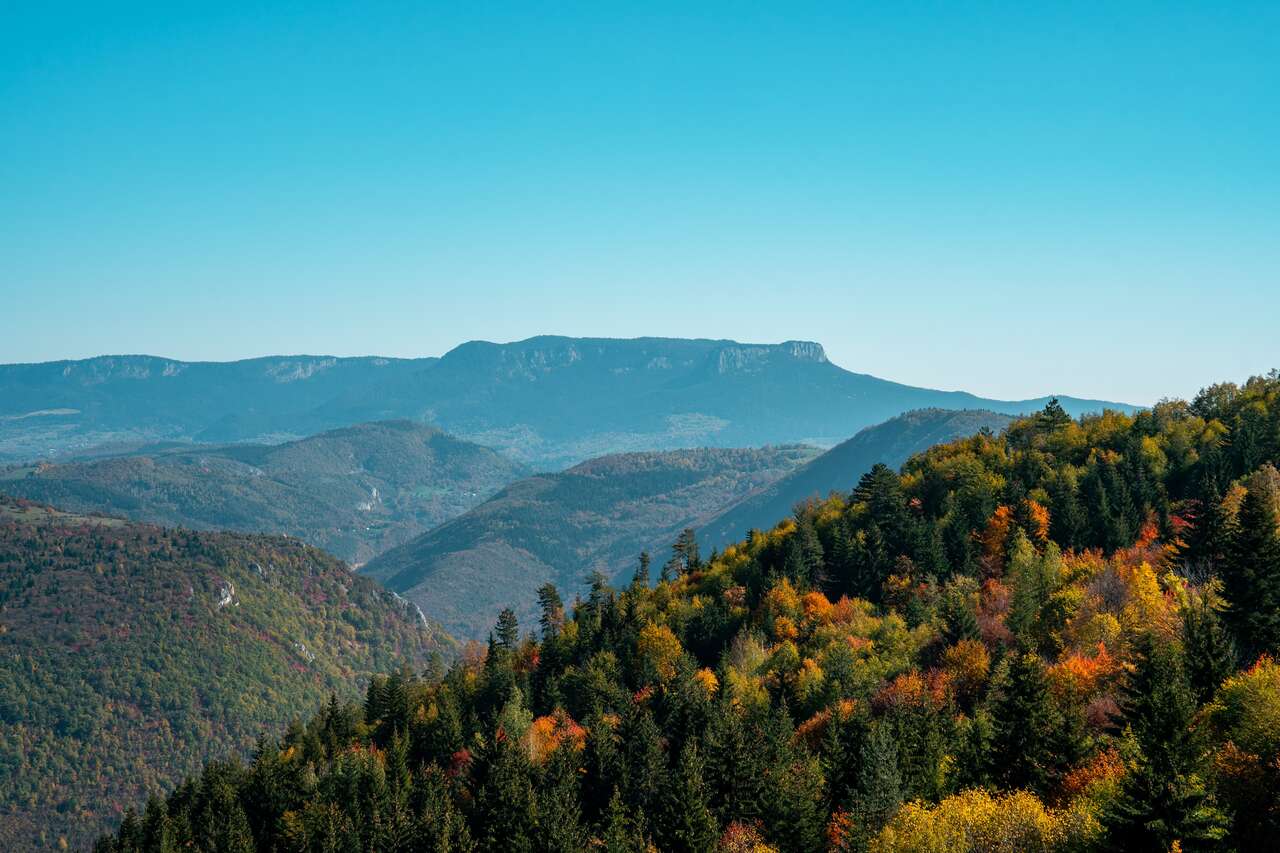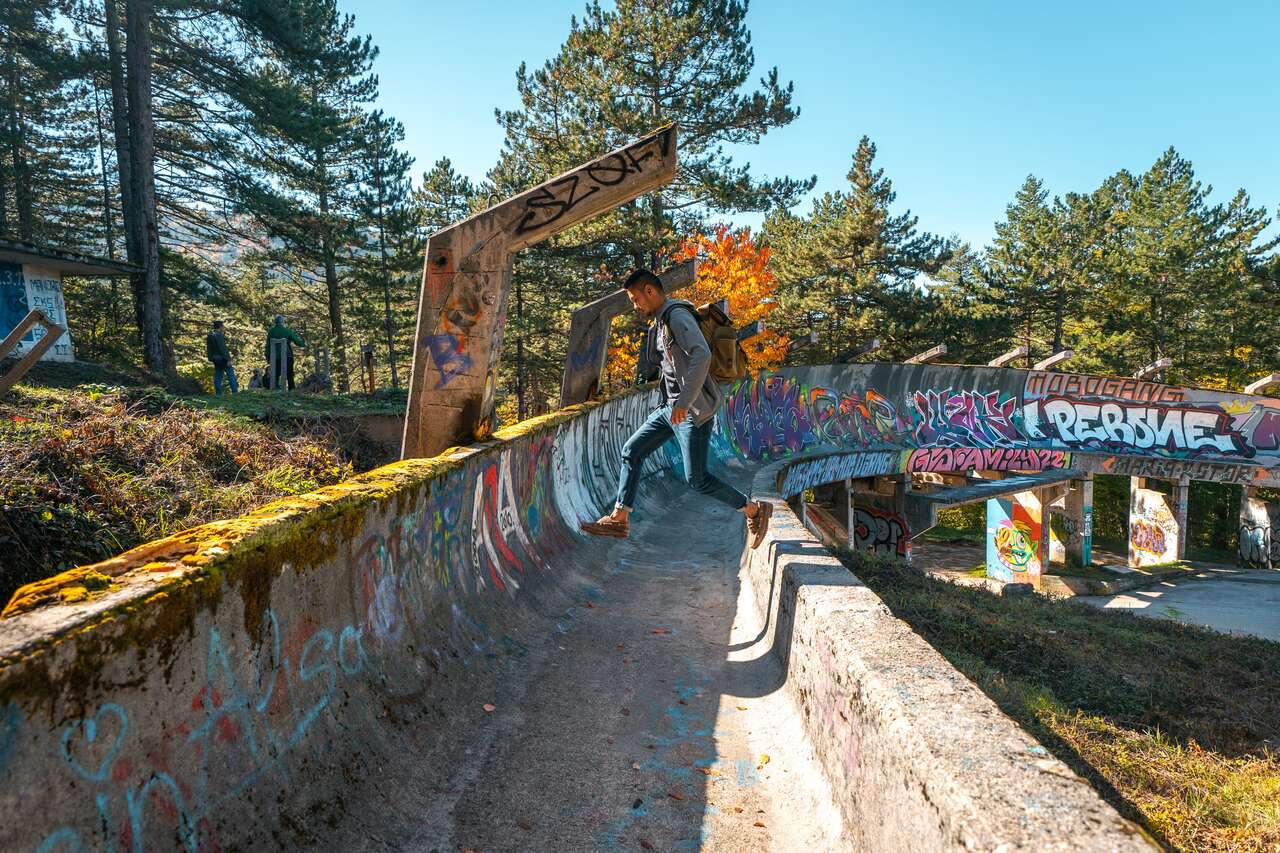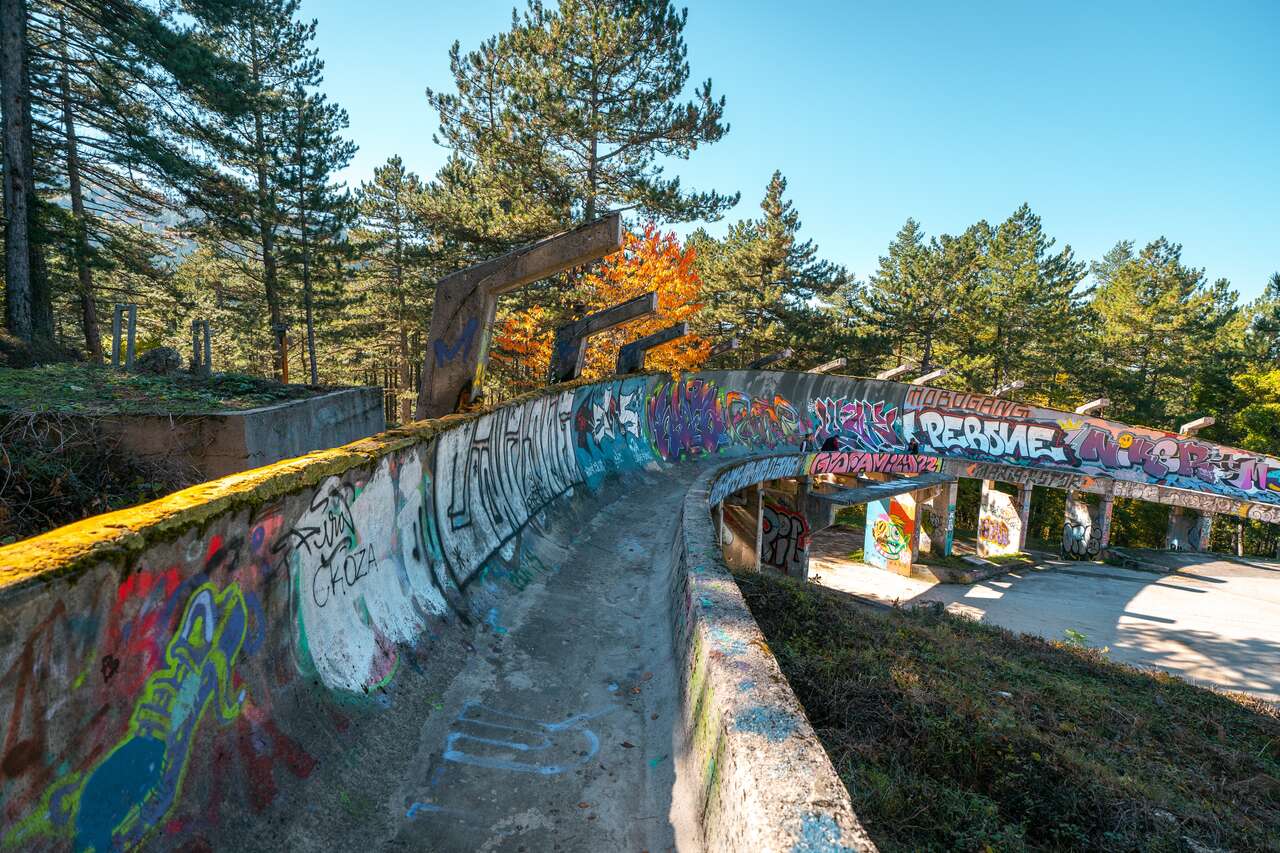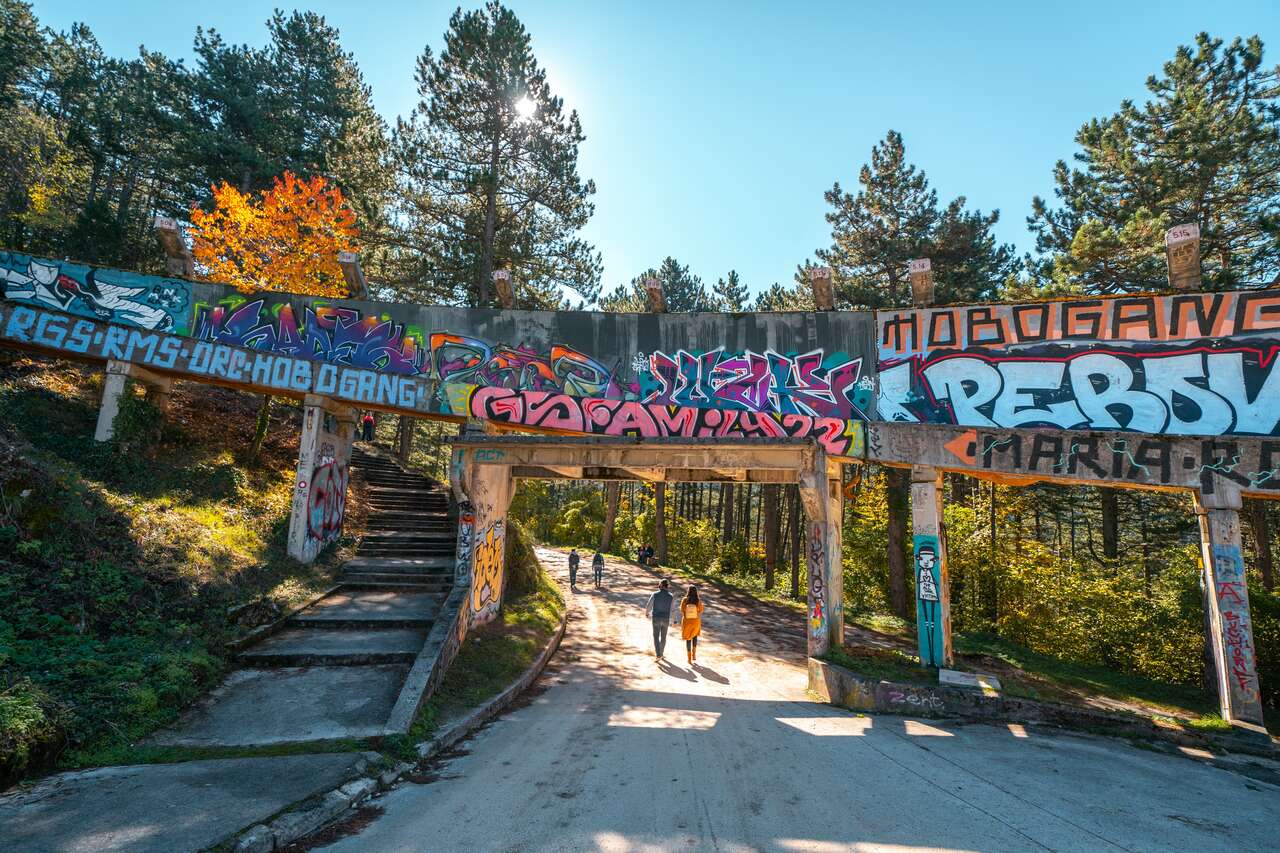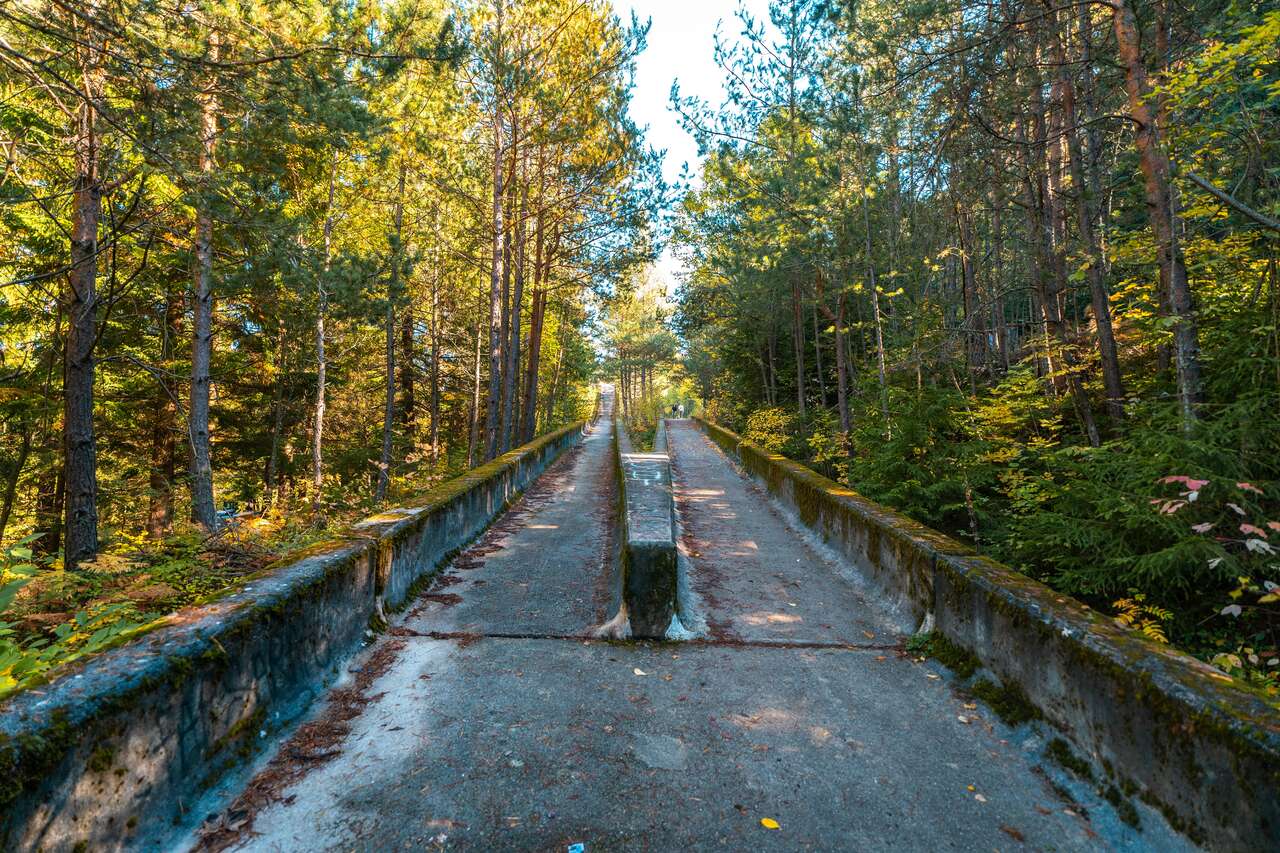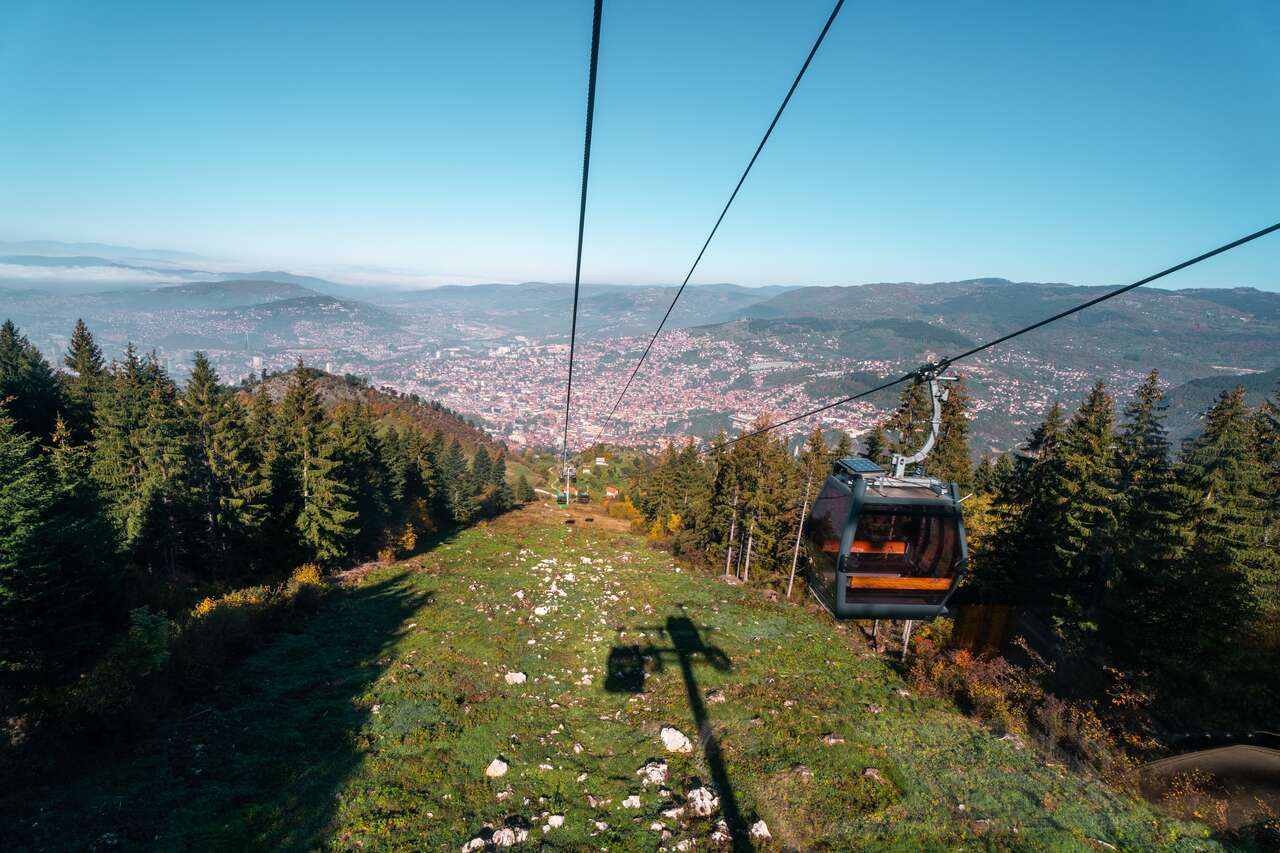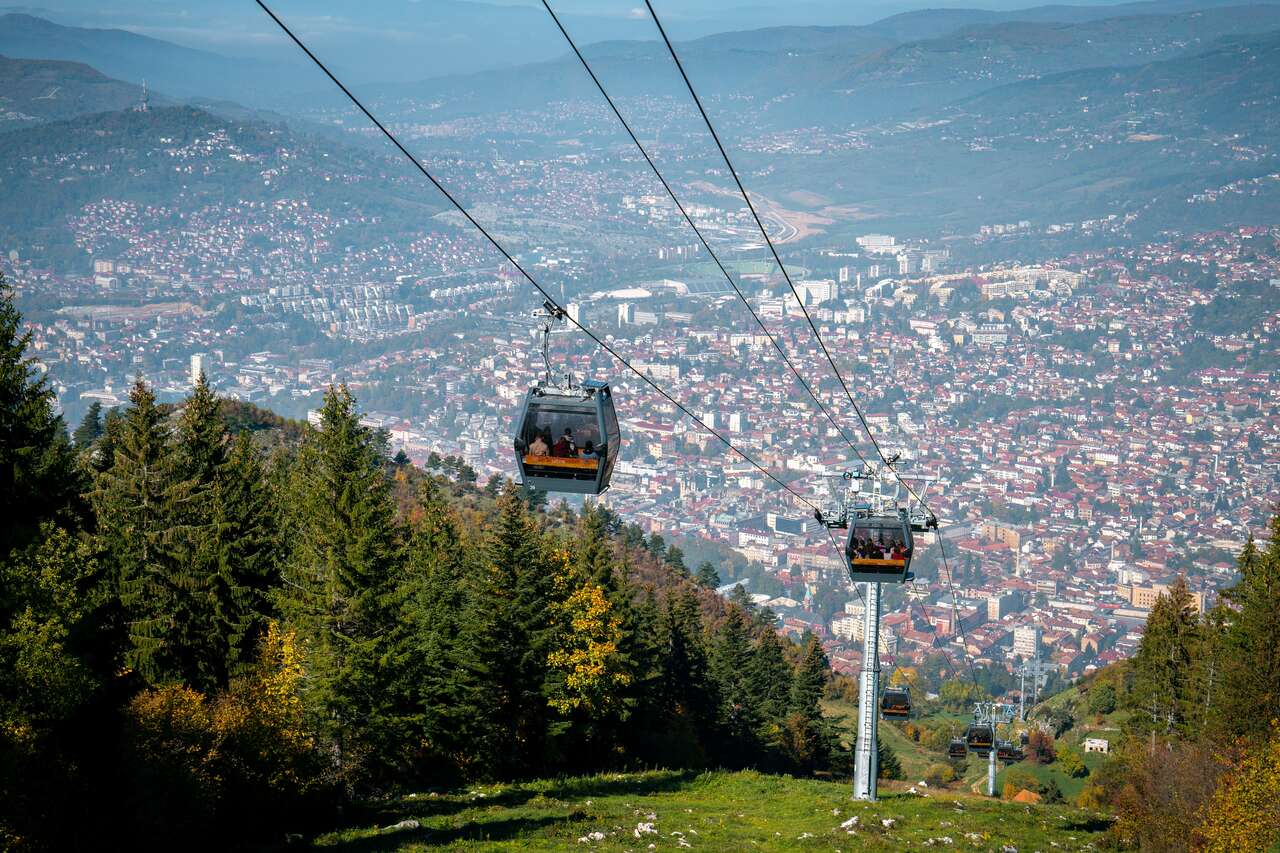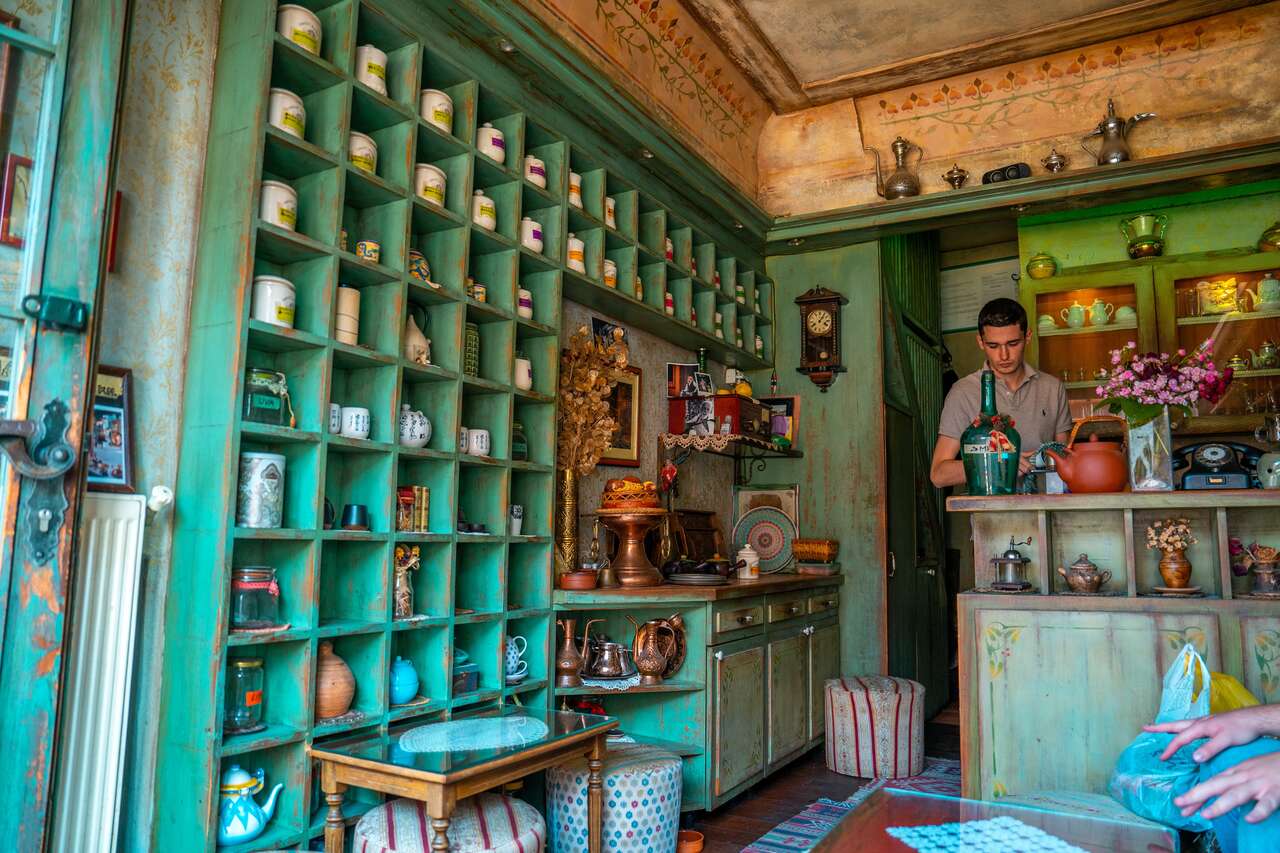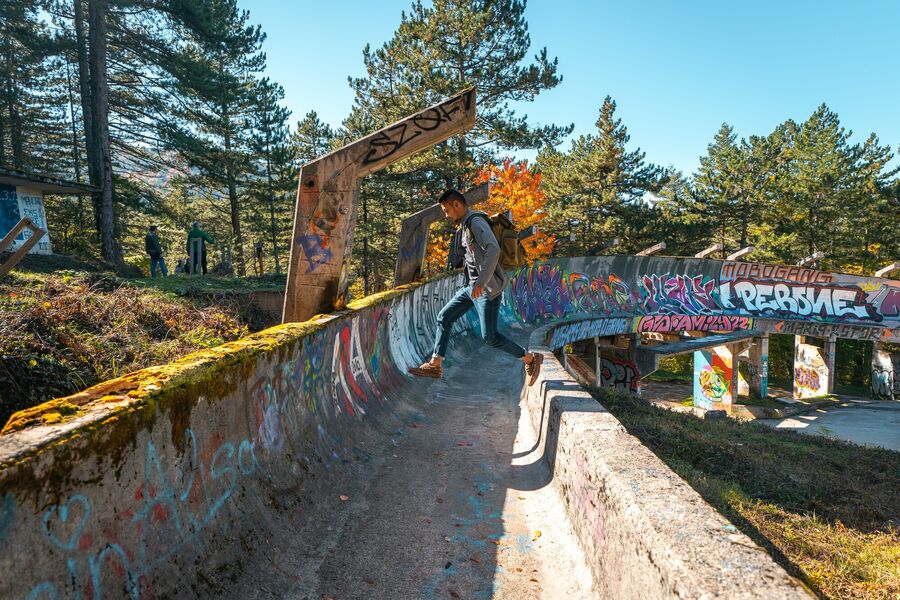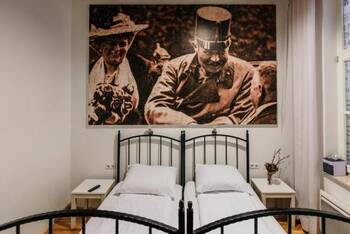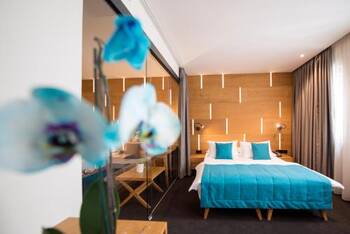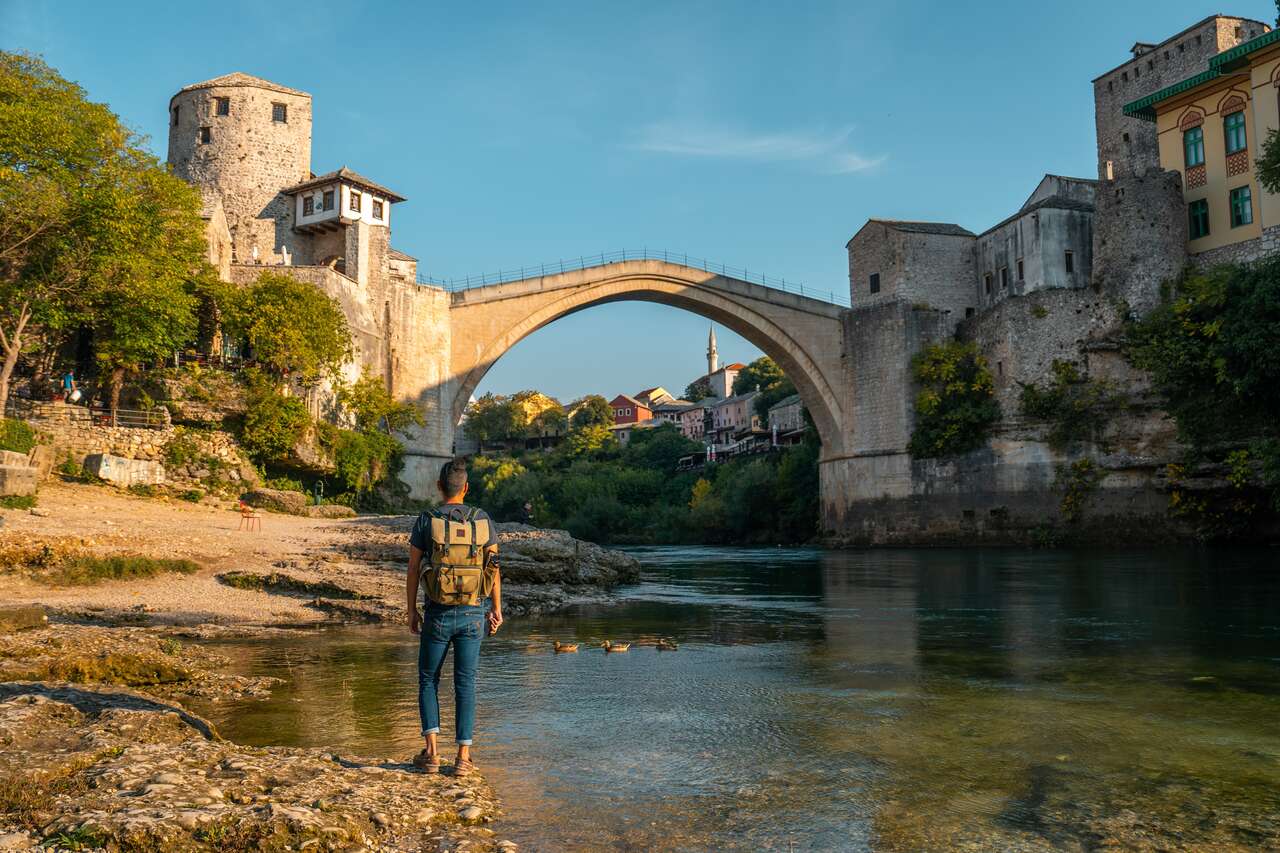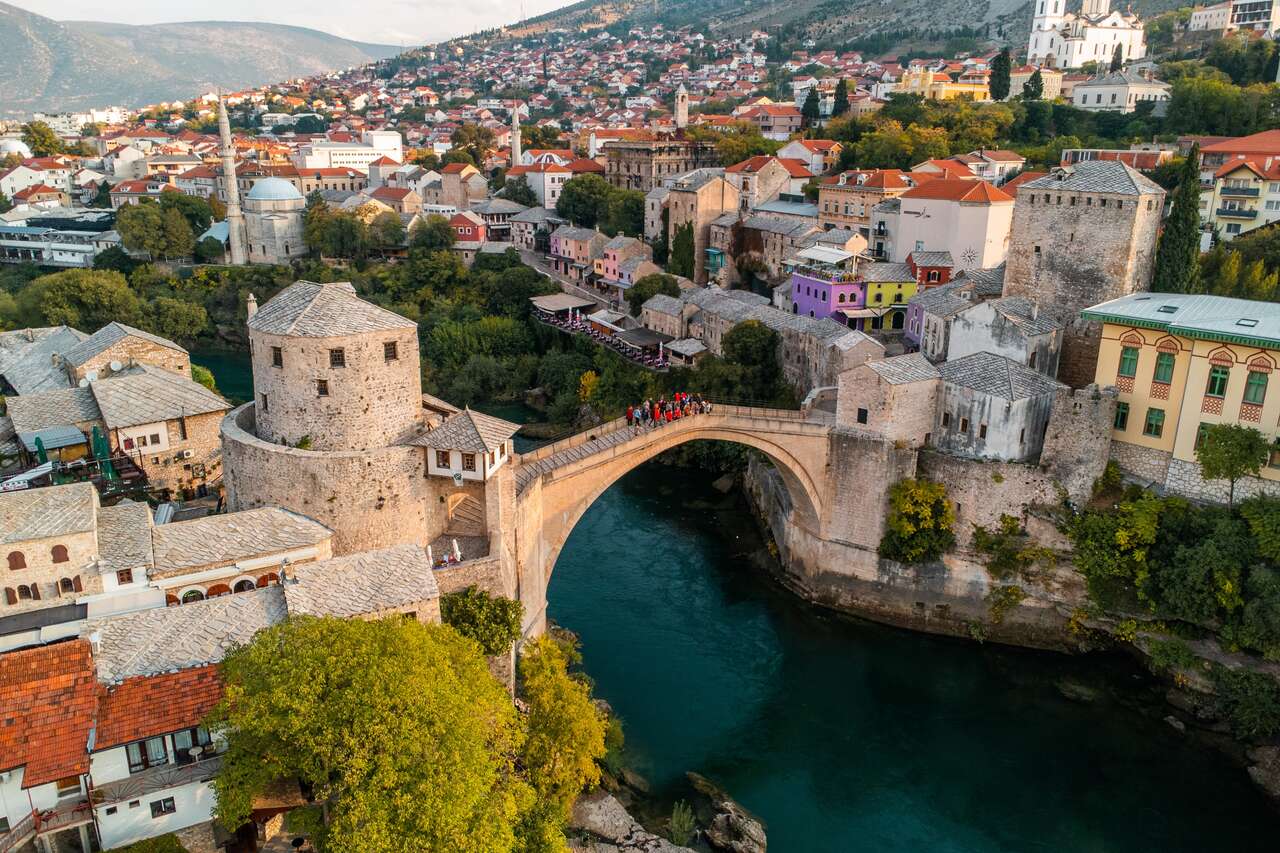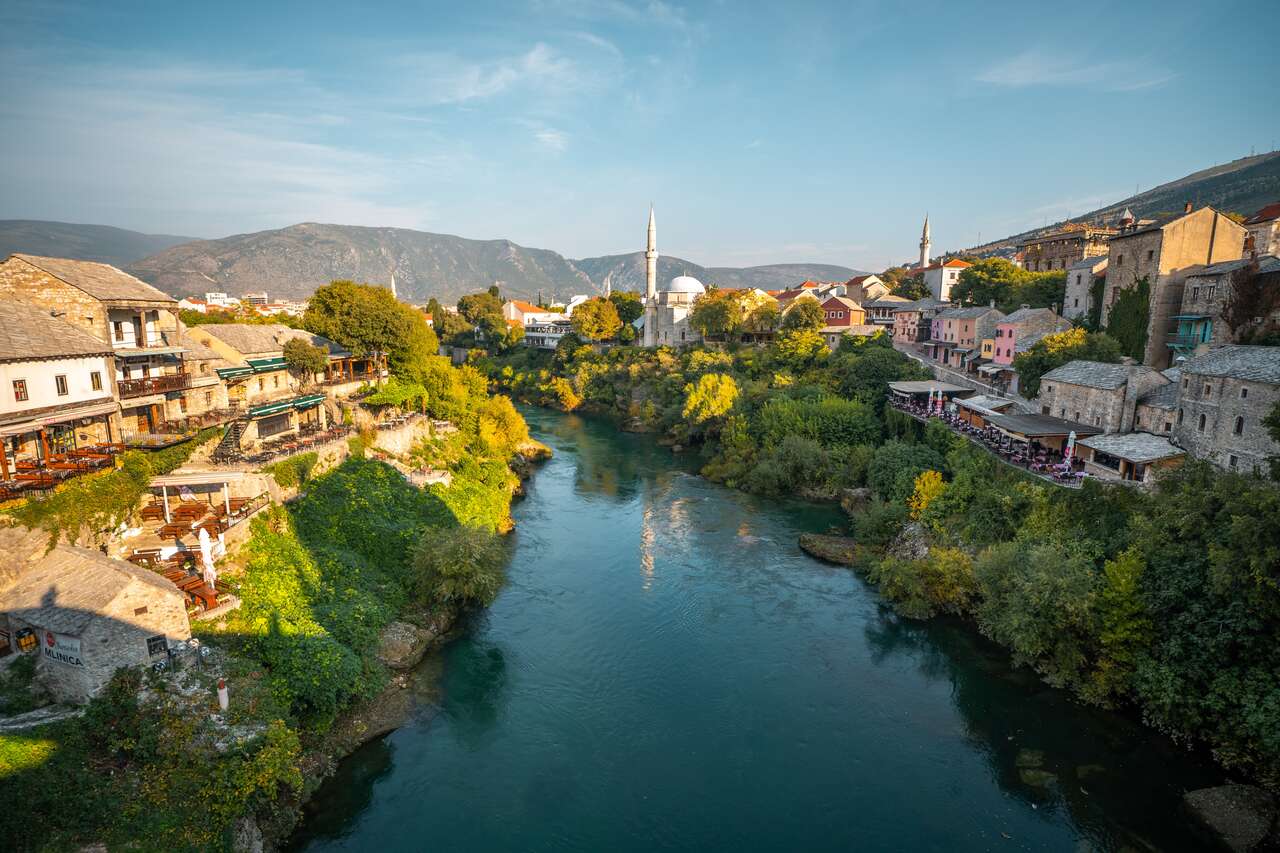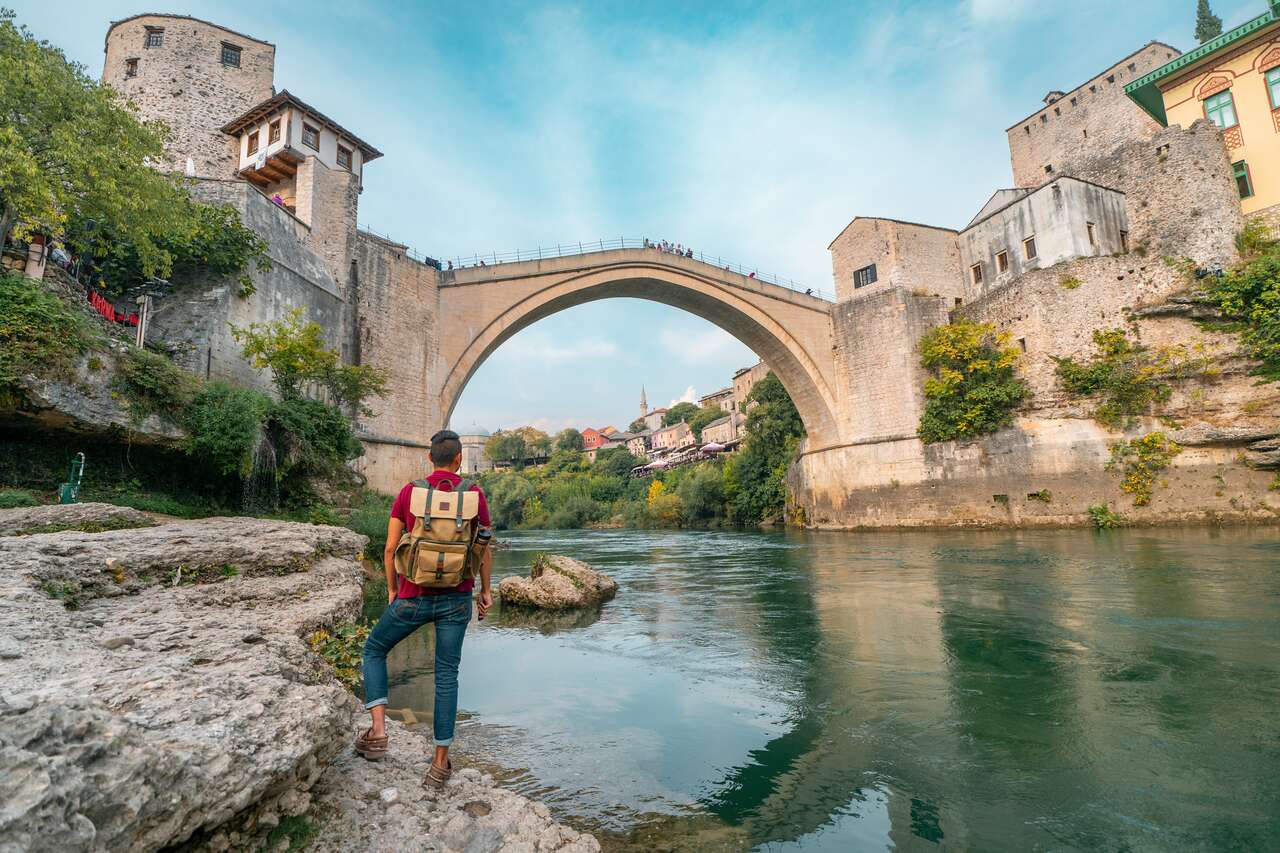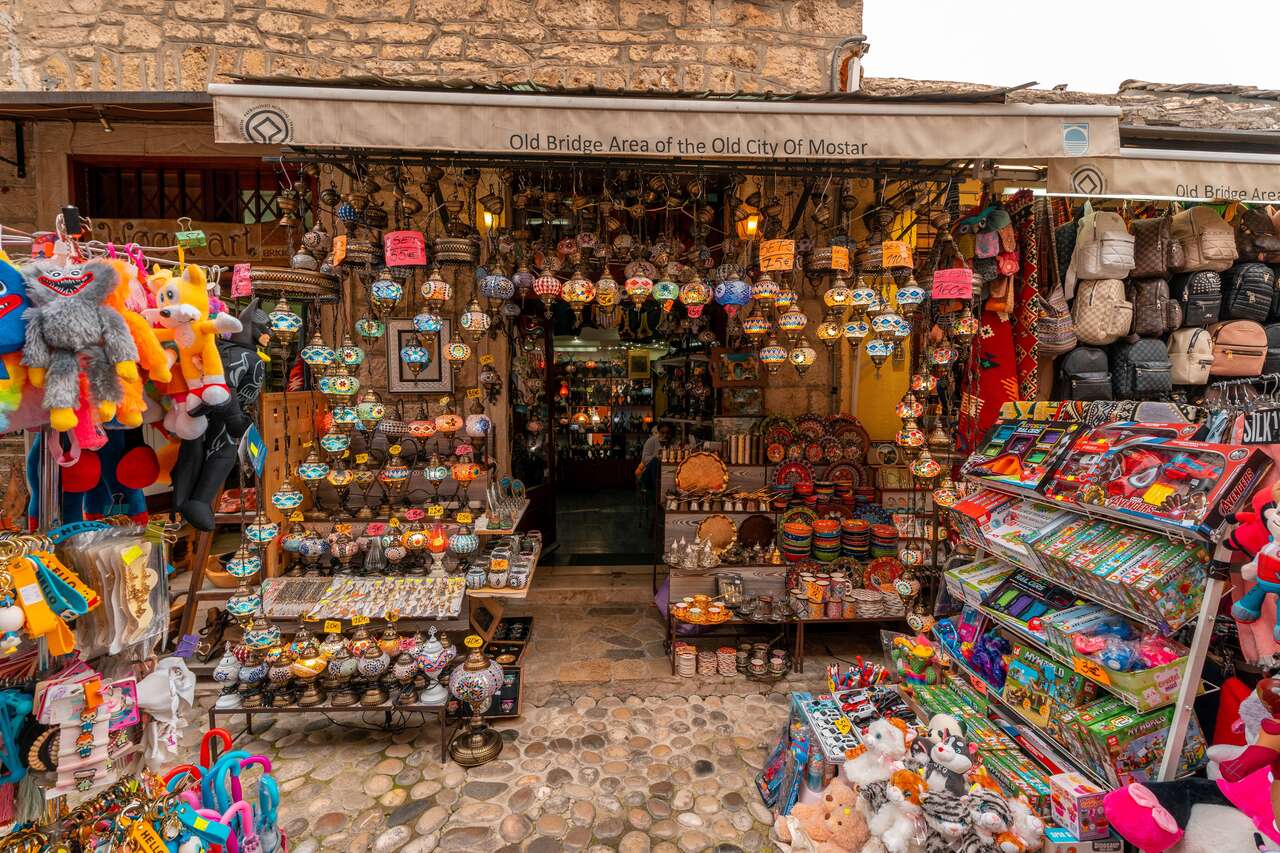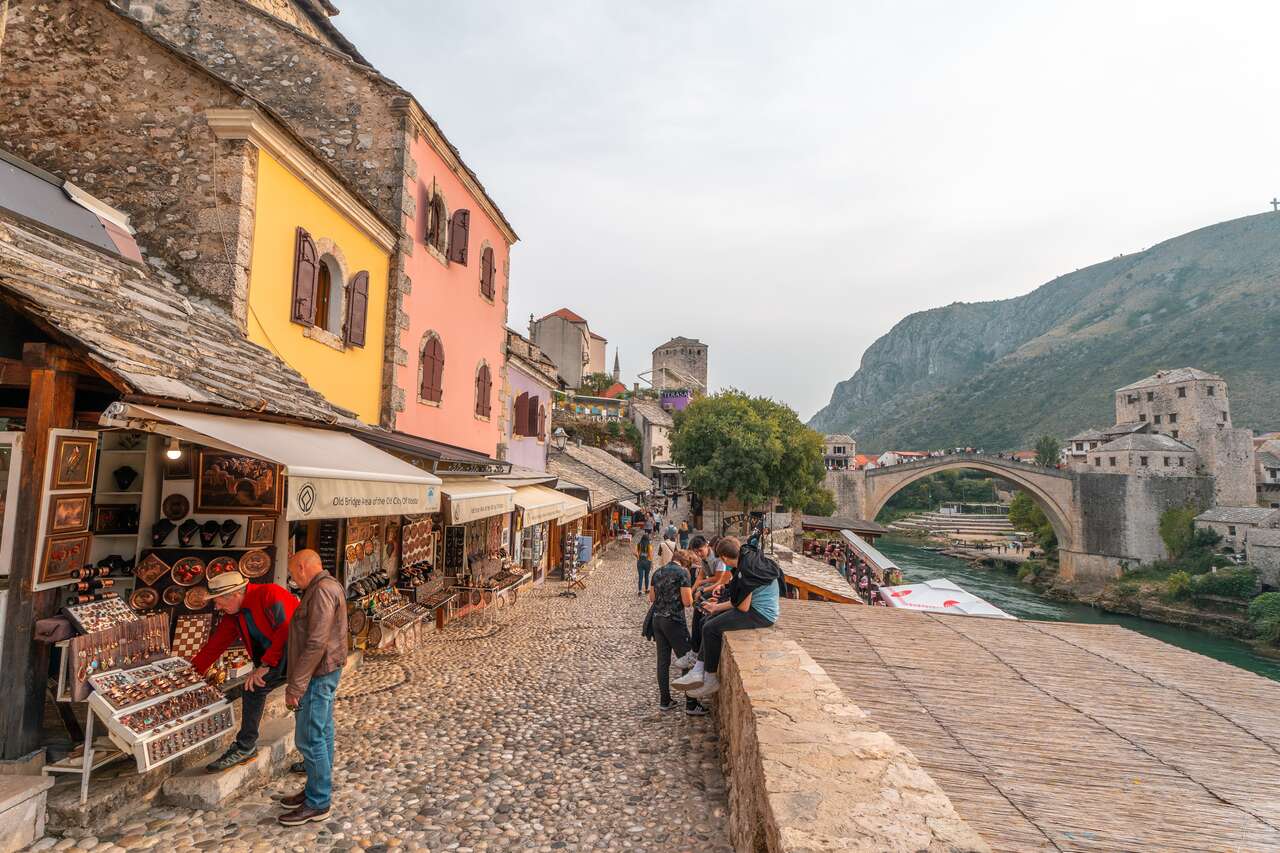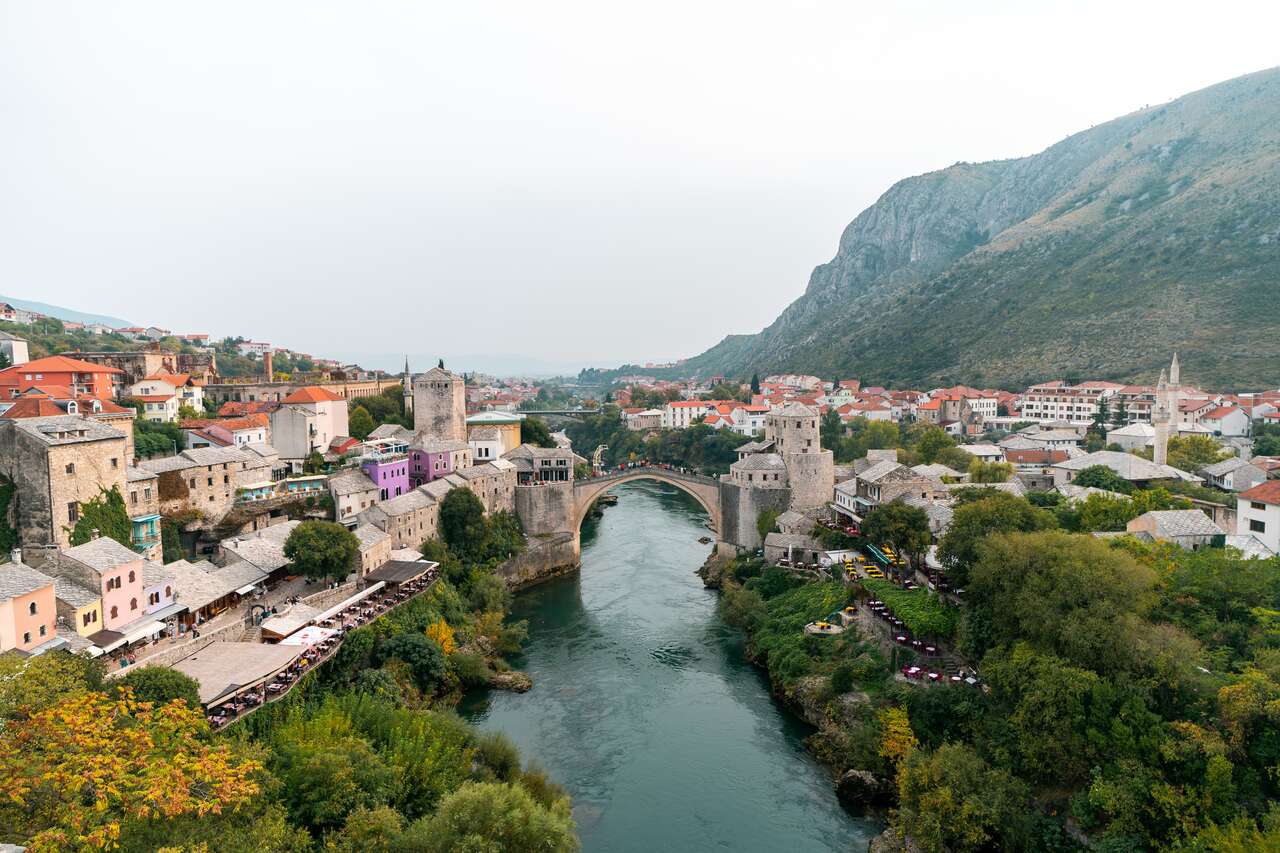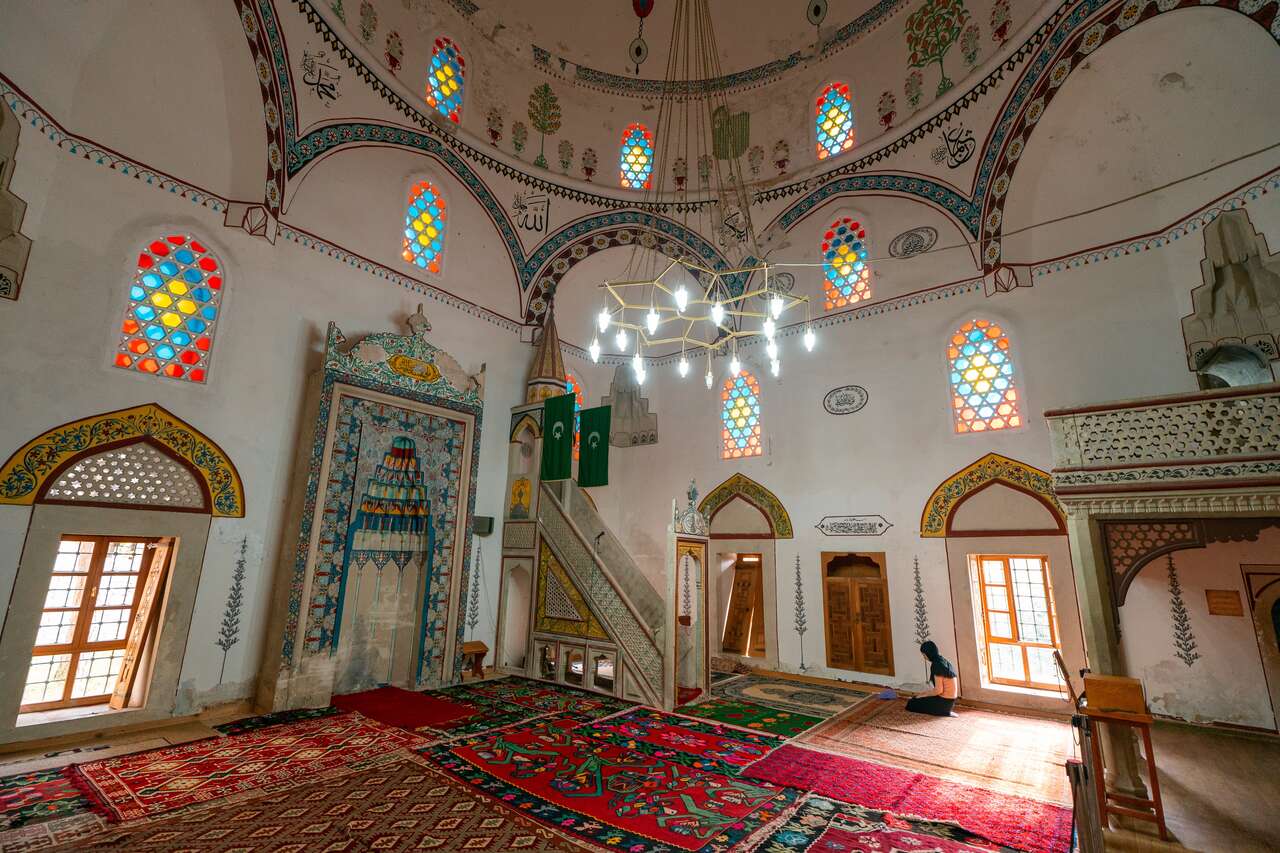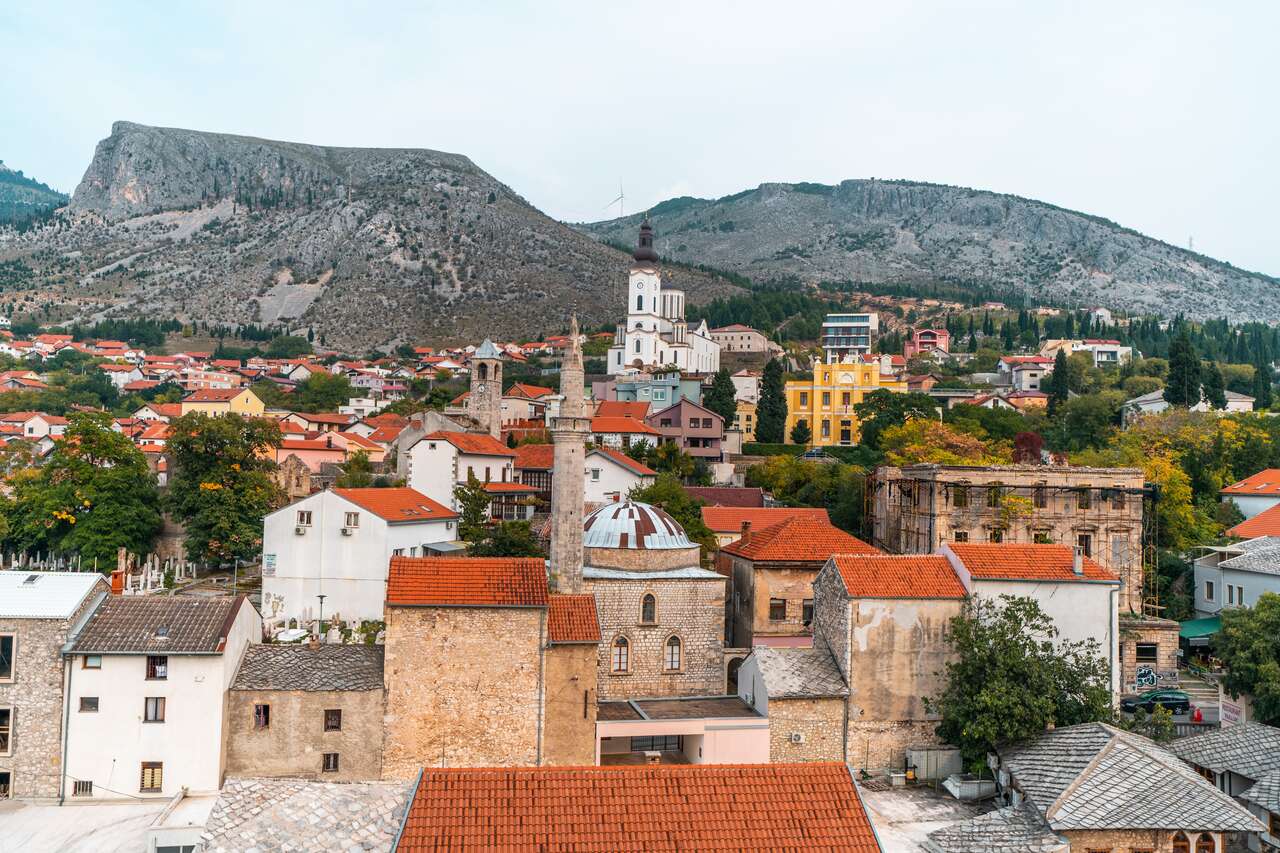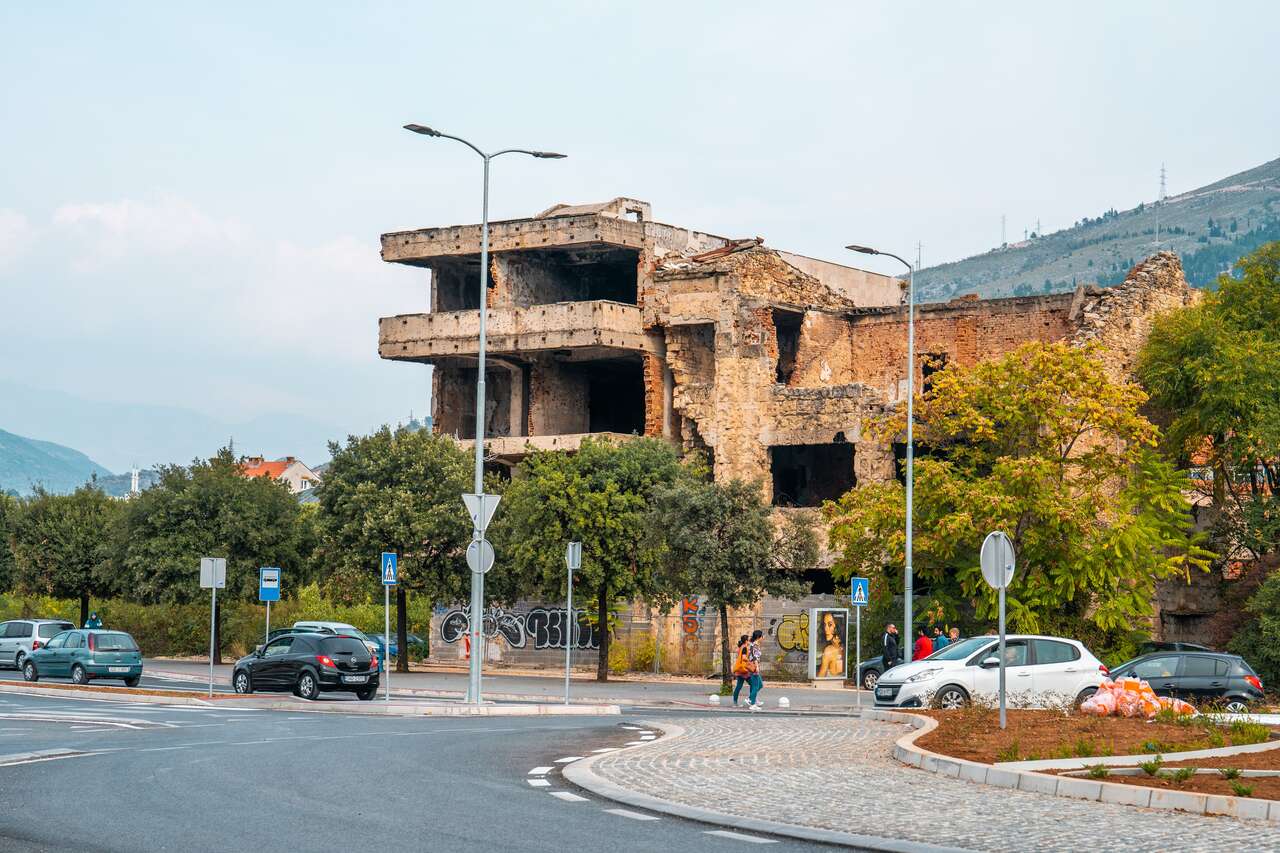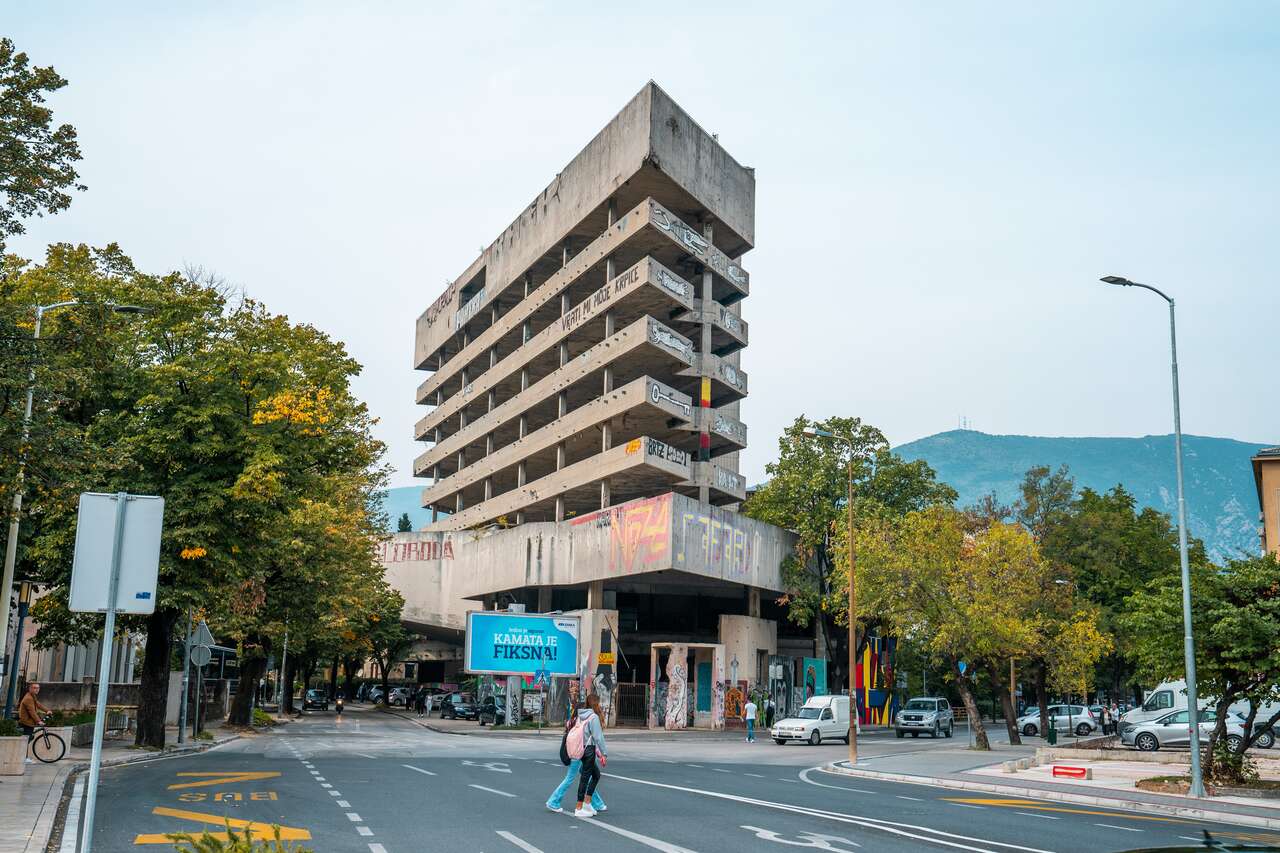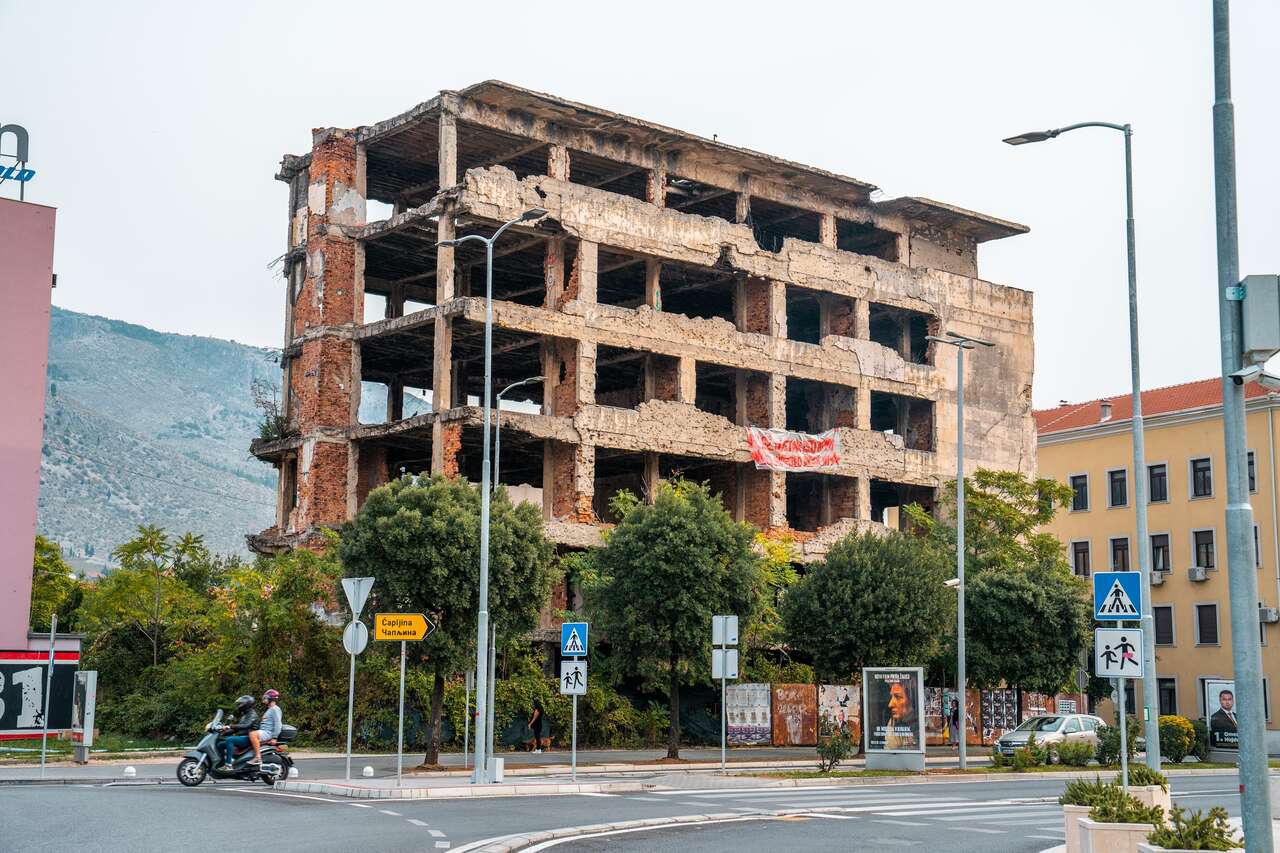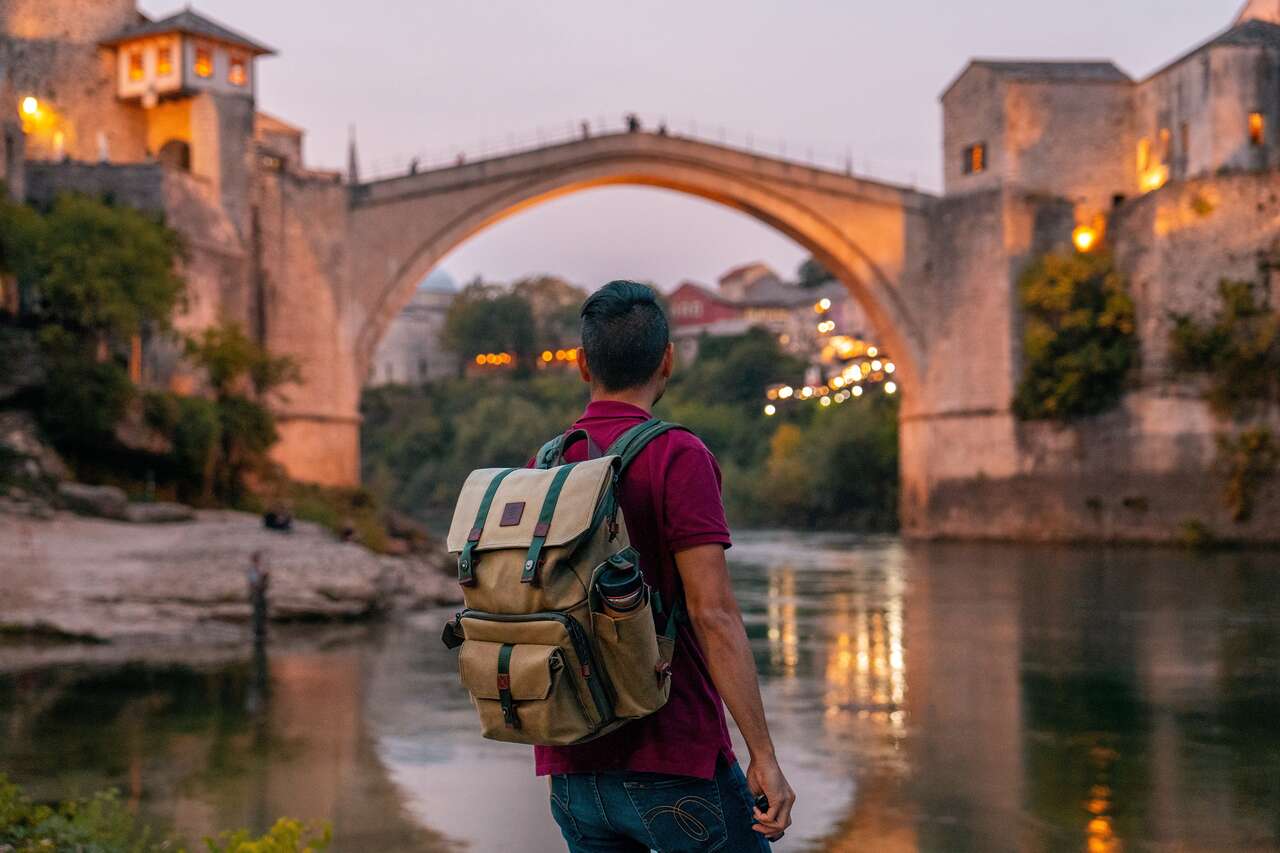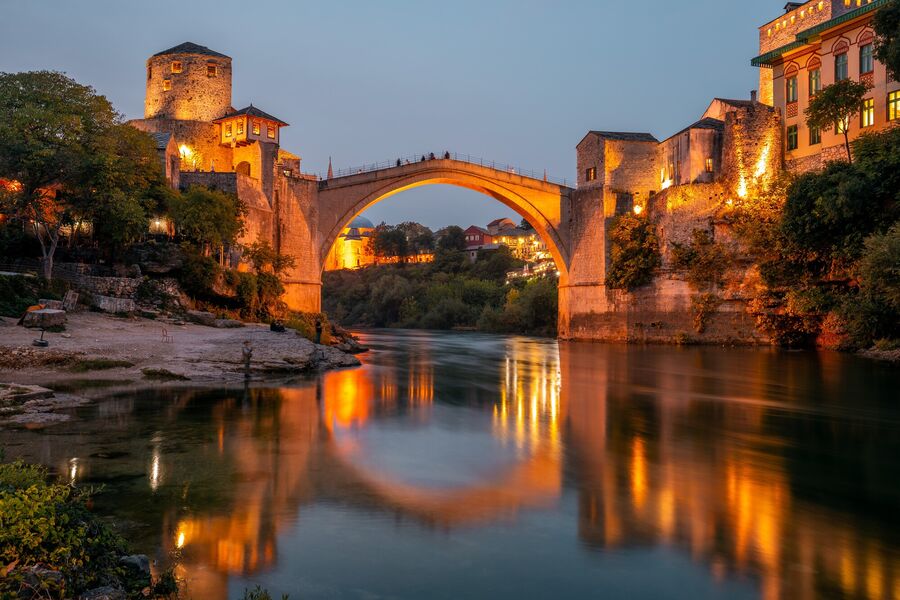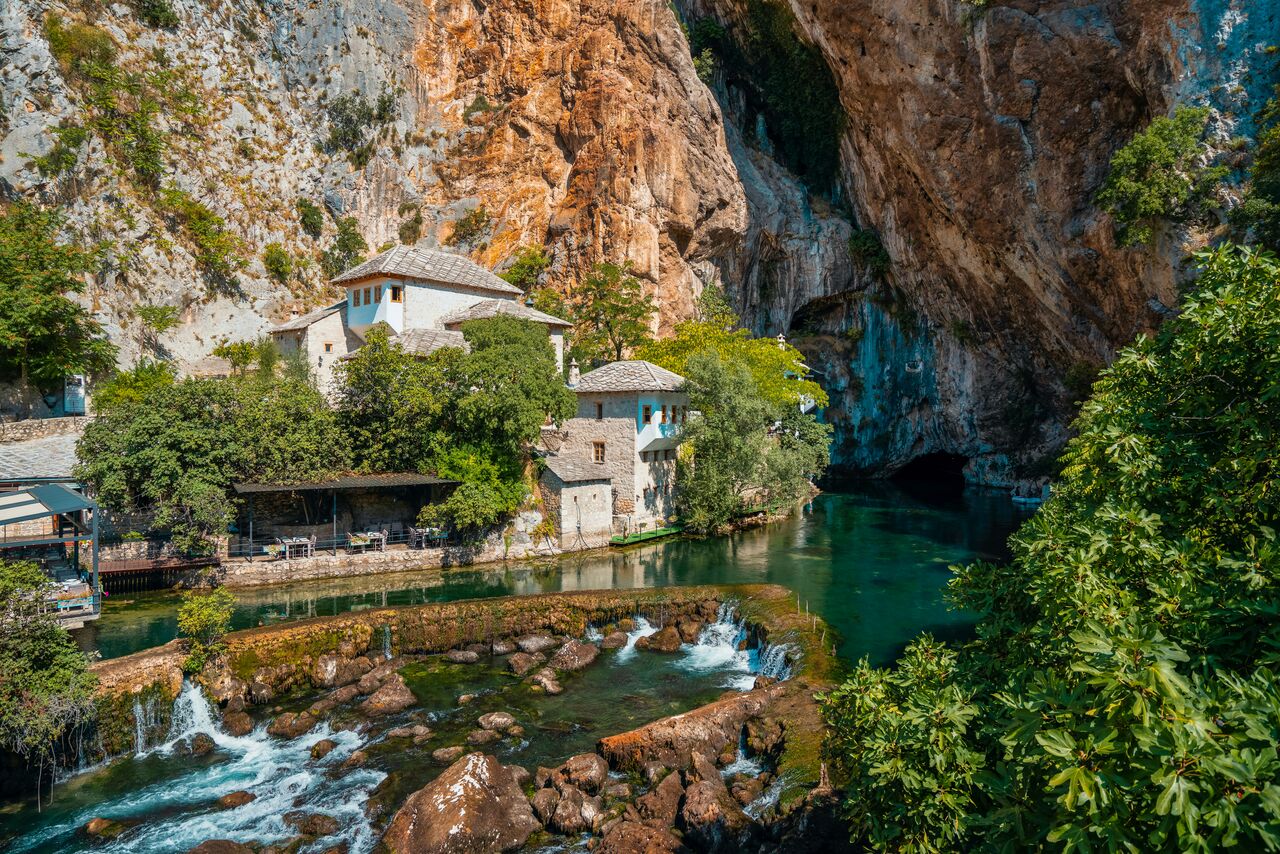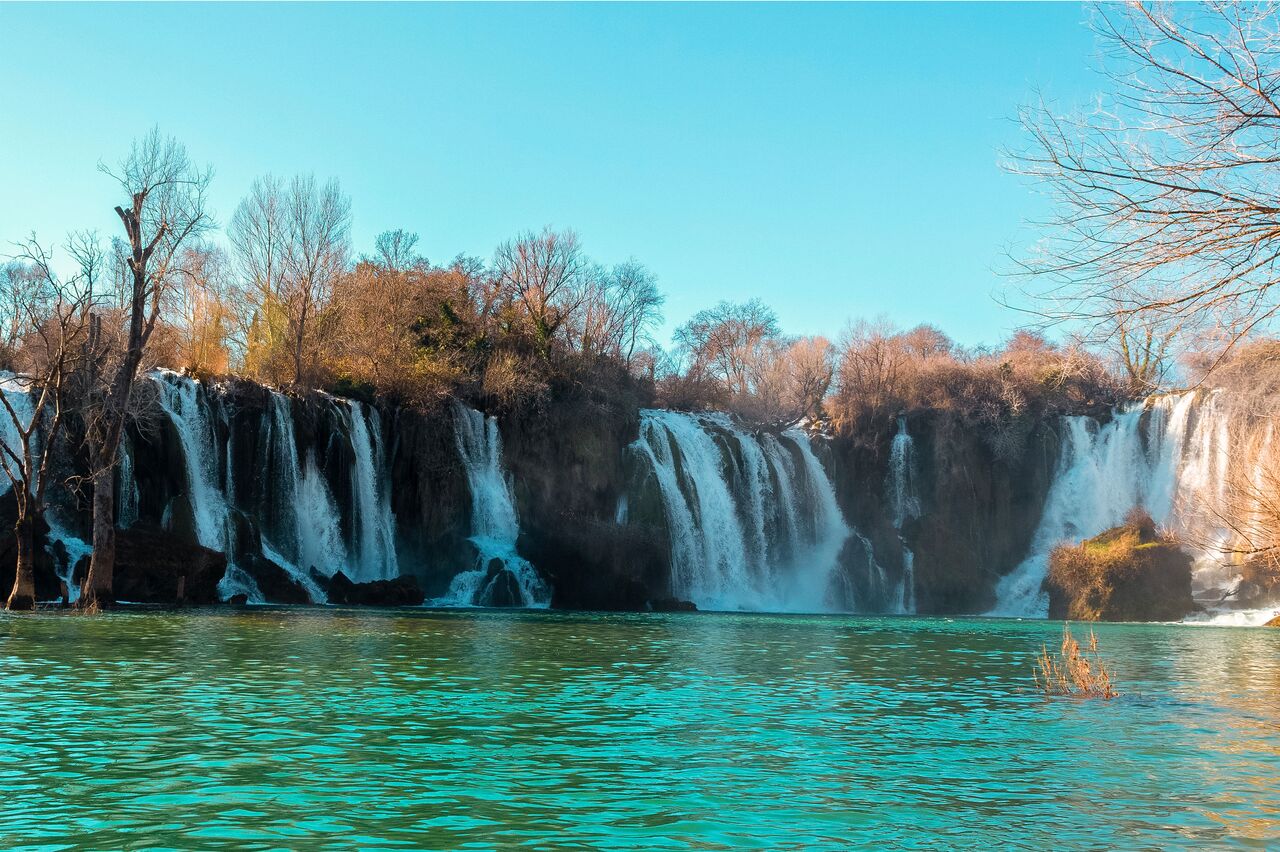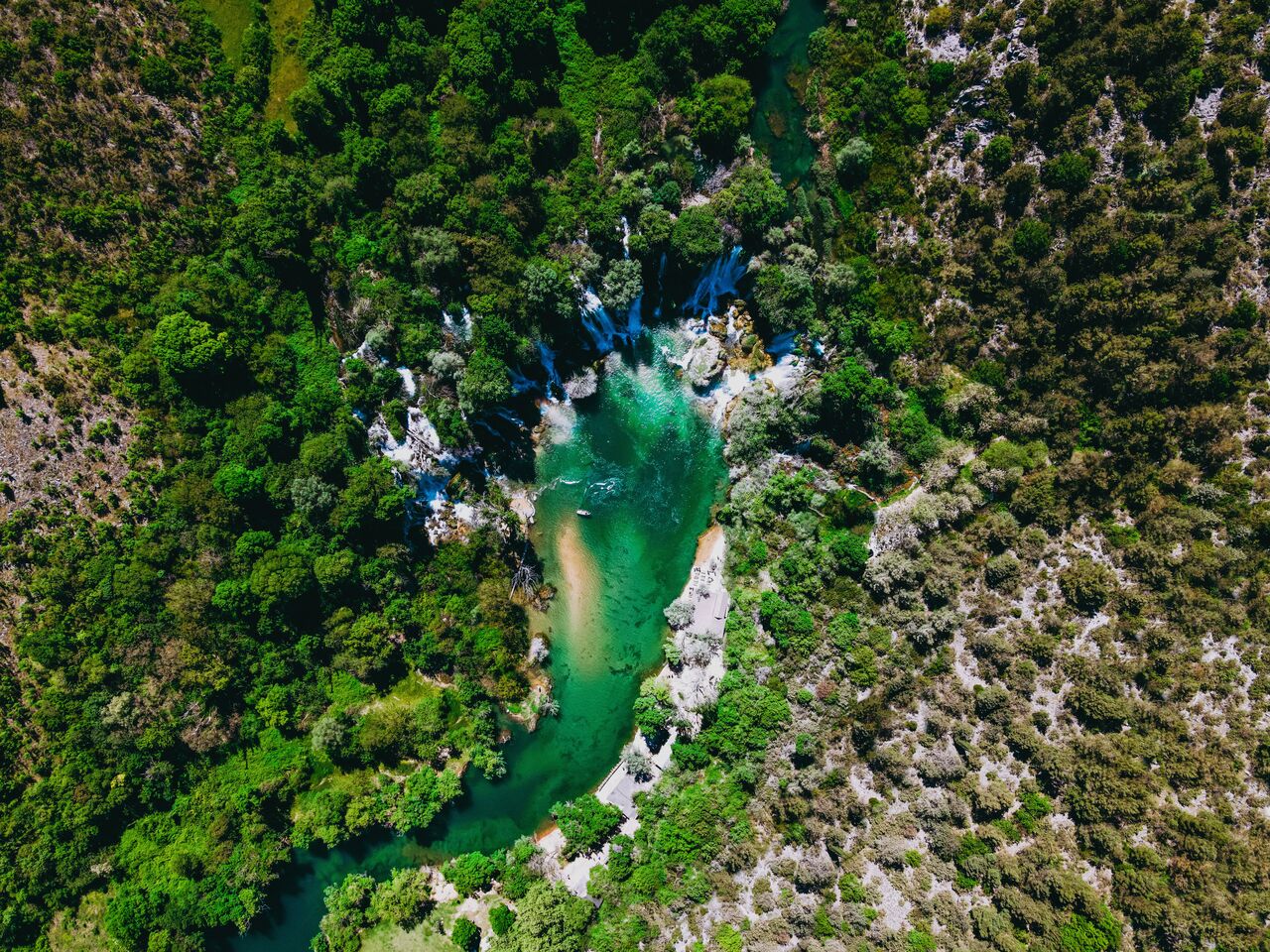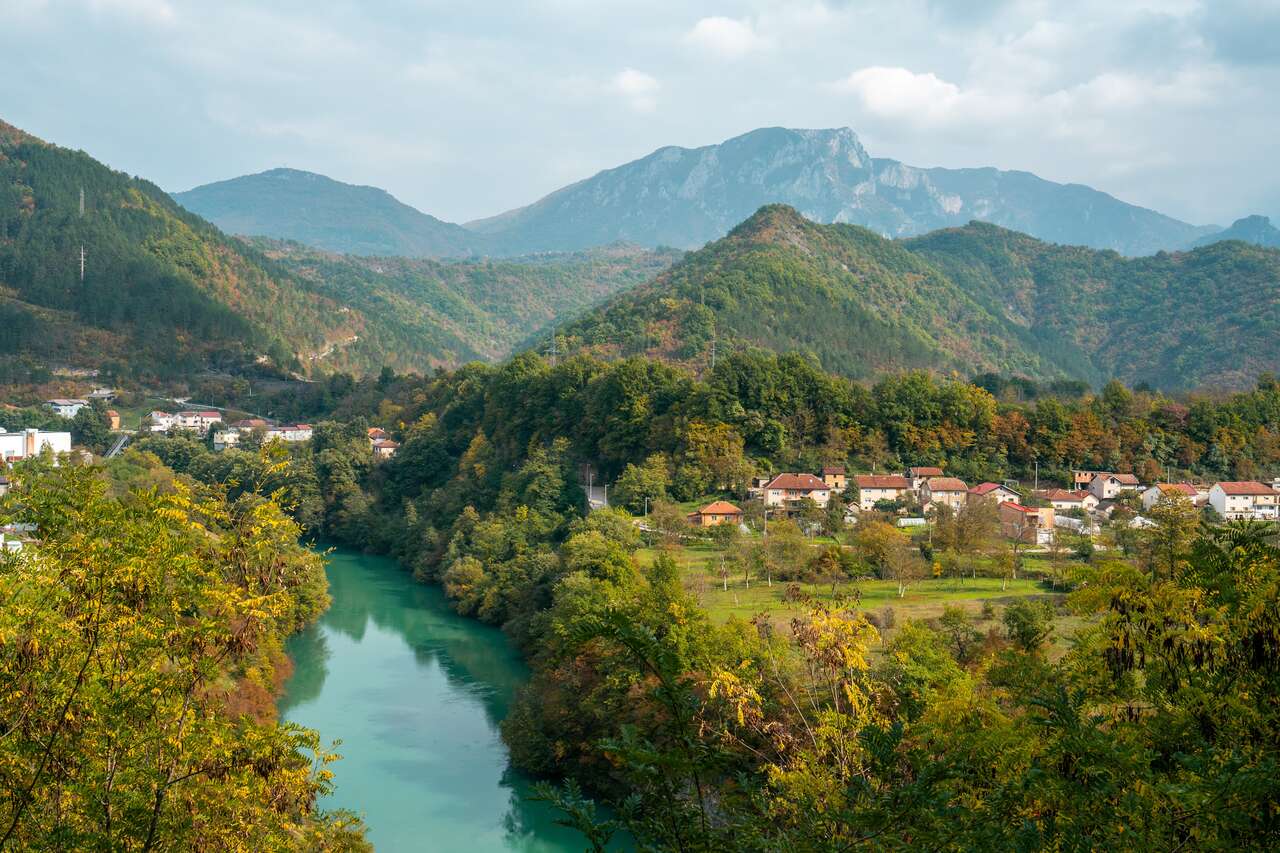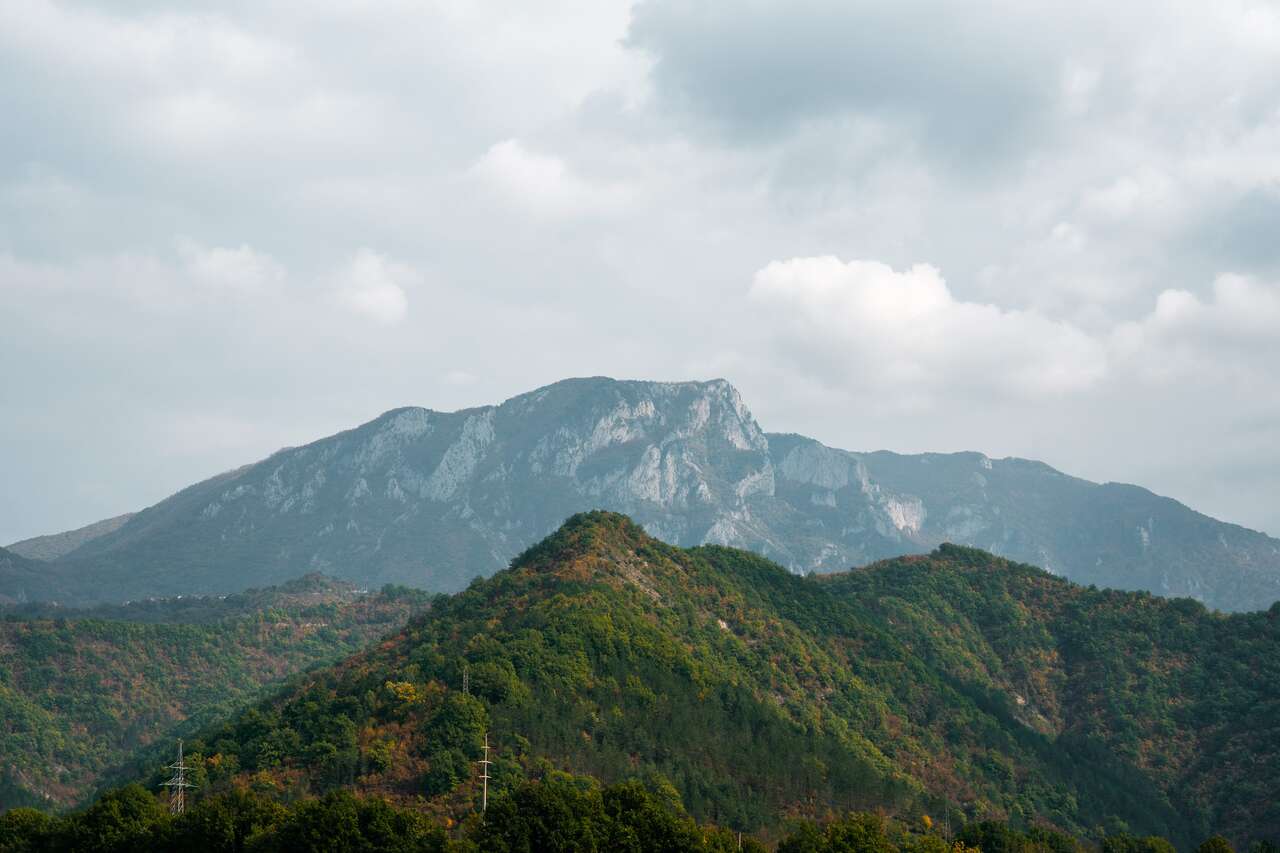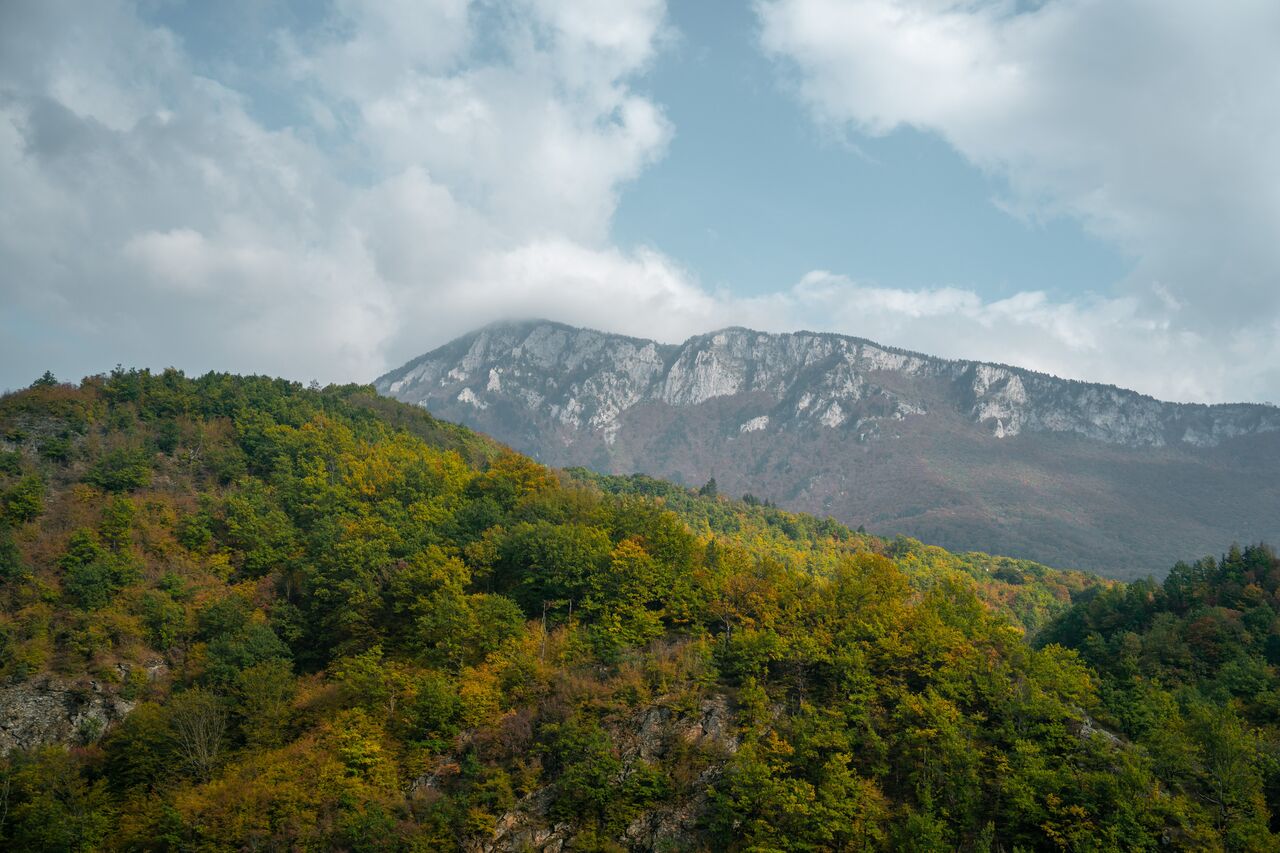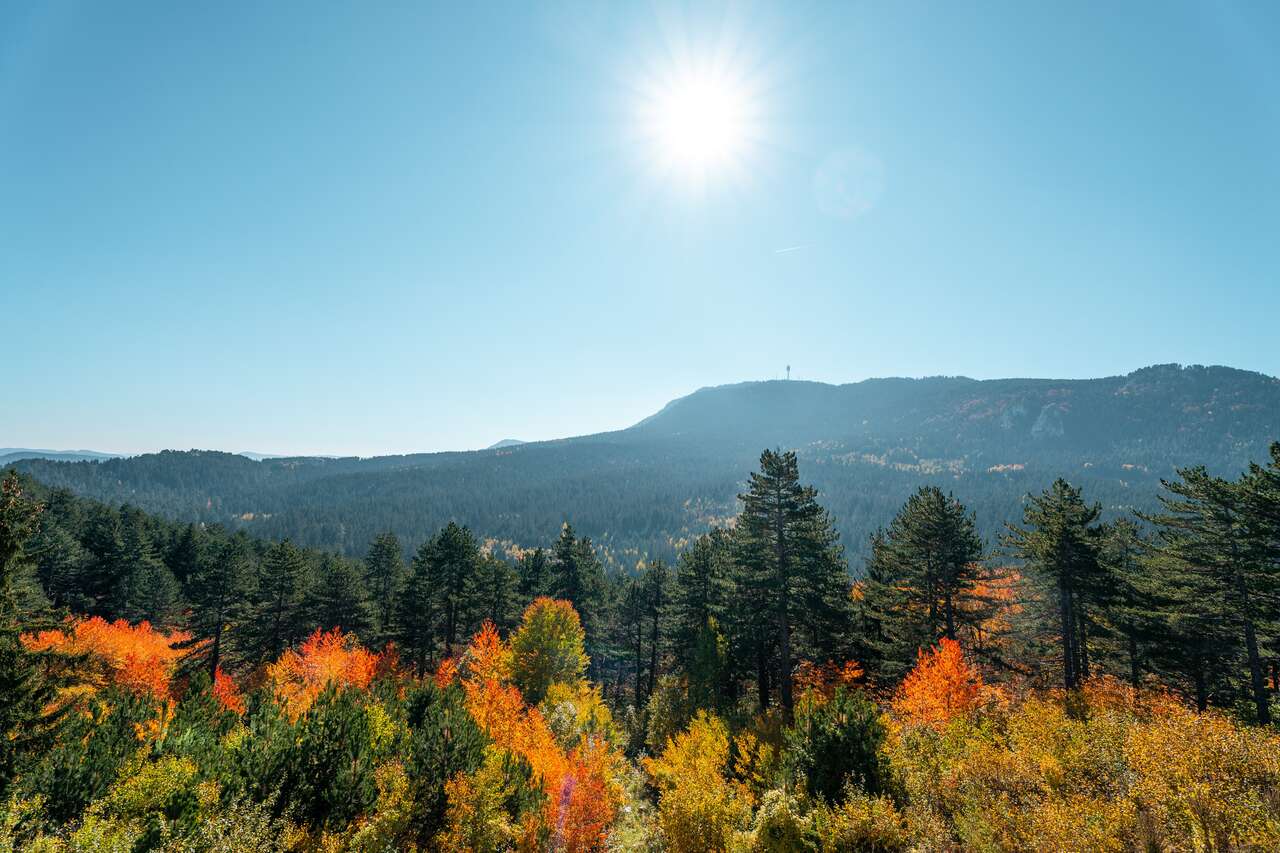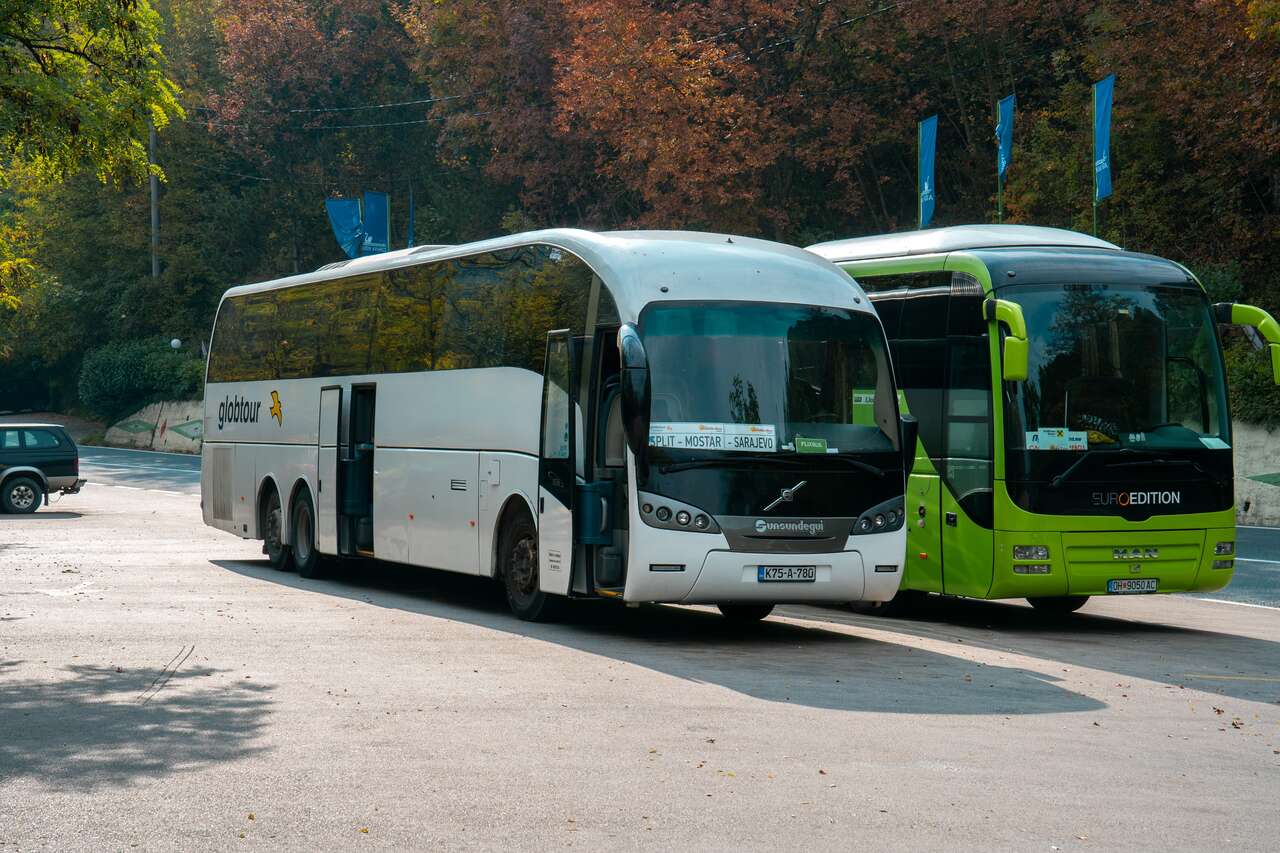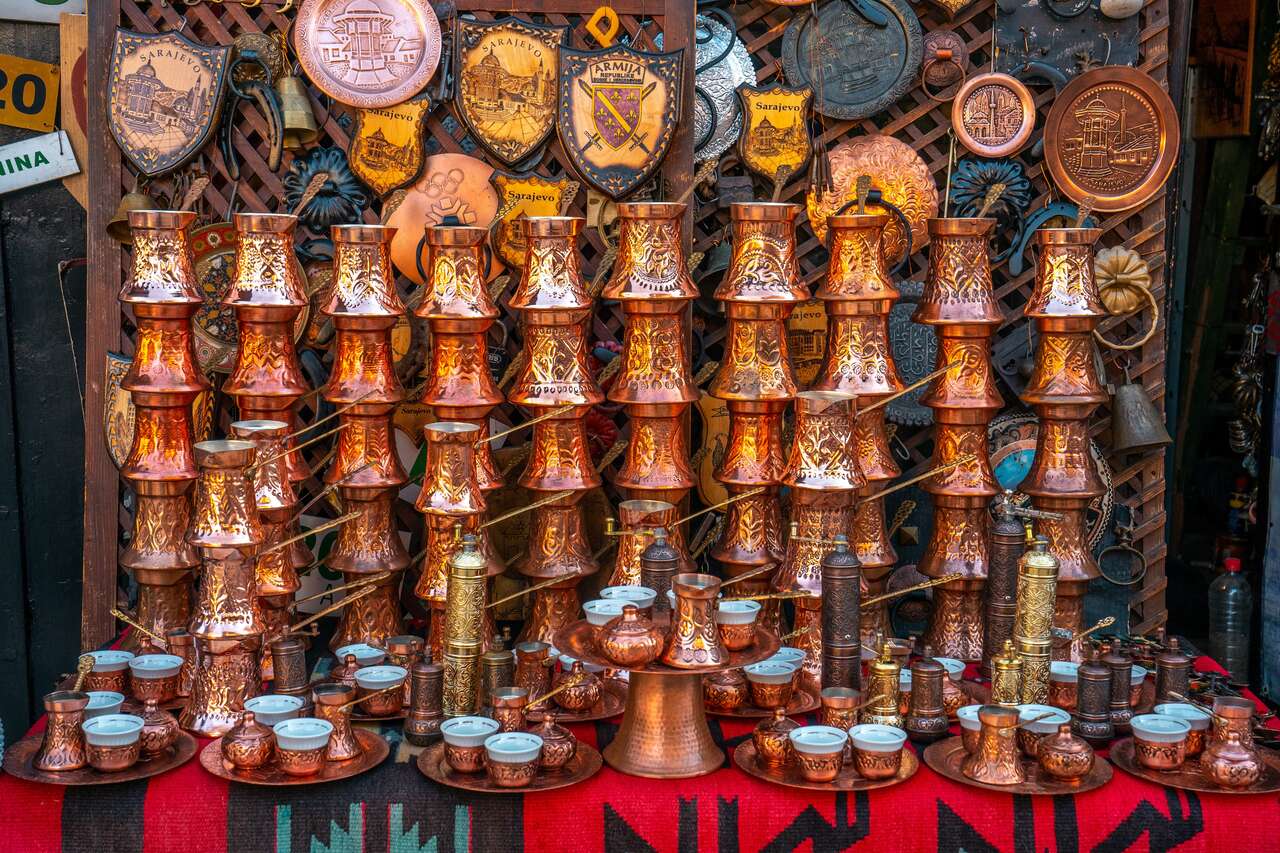Looking to explore Bosnia and Herzegovina, one of the most diverse and interesting countries in the Balkans filled with untouched natural wonders and often-forgotten history, but not sure where to begin? You are in the right place.
With this itinerary, I will take you across this beautiful hidden gem of Europe, visiting some of the best places in the country like Mostar, home to the iconic Ottoman stone bridge, and Sarajevo, a city where east meets west, as well as going on a day trip to visit other remote tourist attractions around the country, all in just 6 days.
Without further ado, here is the ultimate 5-day backpacking itinerary for Bosnia and Herzegovina. Let's begin by looking at all the places we will be visiting in this itinerary with the map below:
- 6 Days Backpacking Bosnia and Herzegovina Itinerary Map
- 6 Days Backpacking Bosnia and Herzegovina Itinerary
- When to Visit Bosnia & Herzegovina?
- How to Get to Bosnia & Herzegovina?
- How to Get Around Bosnia & Herzegovina?
- How Much Money Do I Need for 6 days in Bosnia & Herzegovina?
- Is it Safe in Bosnia & Herzegovina?
- Which tourist SIM card is best for Bosnia & Herzegovina?
- What to Pack for Bosnia & Herzegovina?
- Further Reading for Bosnia & Herzegovina
6 Days Backpacking Bosnia and Herzegovina Itinerary Map
| ☀️ Day 1-3: | Sarajevo |
| ☀️ Day 4-5: | Mostar |
| ☀️ Day 6: | Kravice Waterfall, Blagaj, and Počitelj |
6 Days Backpacking Bosnia and Herzegovina Itinerary
Day 1 - 3: Sarajevo (3 nights)
Our itinerary begins in Sarajevo, the capital city of Bosnia of around 350,000 people, home to some of the most iconic and historically significant landmarks, natural wonders, and awesome museums that can occupy you for days.
On your first day, we are going to begin exploring the city starting from Baščaršija Bazaar, a vibrant and bustling marketplace located in the heart of the historic city center, known for its labyrinthine streets and alleys lined with shops and stalls selling a wide range of goods, including traditional handicrafts, jewelry, spices, and more.
- Walking in Bosnia & Herzegovina (9 days)
- Bosnia tour | 8 days tour in this gorgeous country (8 days)
- Discover Sarajevo and Bosnia Herzegovina , 4 days Tour (4 days)
Dating back to the Ottoman era in the 15th century, the bazaar was originally built as the commercial center of Sarajevo, with merchants from all over the region coming to sell their wares. During the 19th and early 20th centuries, the bazaar underwent significant changes as Sarajevo became part of the Austro-Hungarian Empire, and many of the original Ottoman buildings were replaced with more modern structures.
No time to read?
Don't worry. You can save this page to Pinterest and come back later.
Because of its history, the phrase "East meets West" is often used to describe Sarajevo because of its unique blend of cultures, history, and architecture, and there is no place more apparent than at Baščaršija bazaar.
In fact, there is even a line drawn on the street of Bascarija Bazaar that signifies that you are entering the western or eastern part of town and you will see your surroundings shifted between exotic Ottoman-style buildings with colorful decors and more stoic western-style buildings. It is like being in 2 different places at once.
Make sure you walk all the way from Sebilj which is located in the heart of the Eastern side of the bazaar all the way to the Sacred Heart Cathedral located deep in the western part of town, and you will be able to see the gradual shift in architecture from east to west. It was almost like you are walking in Turkey and all of a sudden, you are in Austria! There is no place quite like it.
As you explore the bazaar, you will come across Gazi Husrev-beg Mosque, and beautiful mosque considered to be the largest one in the country and one of the largest in the region.
The mosque features intricate Islamic architecture and a stunning interior, hand-painted calligraphy, ornate chandeliers, and colorful stained-glass windows, you can check out inside or you can learn more about its history and the life story of the governor that bears its name from the museum across the street.
Once you are done exploring the bazaar. It is time to dive deep into the tragic history of Sarajevo and Bosnia and its conflicts and wars that had fallen upon the Bosnian people in much of the 90s, during the tumultuous time of Yugoslavia's dissolution.
It is a painful memory that is still quite vivid in the mind of the people here and in order to see where the people are coming from, one of the best things we should do as a visitor to their country is to learn about their history and understand how much it took them to be where they are now.
And there are a ton of awesome museums you can check out in Sarajevo ranging from a museum dedicated to telling the tragic stories of the Bosnian people living during the war at War Childhood Museum to a more inspiring museum that collects and archives the archeological history of Bosnia at the National Museum of Bosnia and Herzegovina.
There is also a war photography museum called Gallery 11/07/95 that you should also check out while you are in Sarajevo. The gallery is dedicated to the victims of the Srebrenica genocide, which took place in July 1995 during the Bosnian War and features powerful exhibits that tell the story of the genocide and its impact on the people of Bosnia and Herzegovina.
The Museum of Crimes Against Humanity and Genocide is also another great museum to visit if you want to learn more about the tragic history of the city during the Bosnian War featuring artifacts, photographs, and personal accounts from survivors and witnesses of the war. The goal of the museum is to educate visitors about the atrocities that occurred during the war and to honor the memory of the victims.
One of the most historically significant places you should visit in Sarajevo is Latin Bridge, a 16th-century Ottoman-style stone bridge, that doesn't look particularly special, but it is here that many historians considered to be the starting point of one of the most tragic events in modern history that shook the world to its core. This is where World War I begins.
This exact location at Latin Bridge is the site of the assassination of Archduke Franz Ferdinand of Austria, which occurred on June 28, 1914, an event that sparked World War I and changed the course of world history forever.
It was one of the worst world events to have ever occurred to the world with the highest casualties out of any war fought in modern times and it all begins right here. Right at the location, you will also see a replica of the car where the Archduke was being transported around before he was assassinated and a museum where you can learn about the event and how it played out in detail. If you are interested in world history, you are going to enjoy the museum thoroughly.
In the evening, I recommend you go and watch the sunset at Yellow Bastion, a historic fortification located along the hillside of Sarajevo with an incredible vantage point over the city.
At Yellow Bastion, you can find a local cafe at the top offering tea and coffee while enjoying the incredible sweeping panoramic views of the city and its hilly surroundings below.
The bastion is located on the eastern side of town and to get there, you will have to walk past Kovači Cemetery, a 19th Century historic cemetery with more than 400 tombs with impressive carvings that stretches out across the hill. Be sure to stop by there as you make your way up to the bastion.
After sunset, you can make your way back to Sarajevo and hang out around Sebilj, a wooden fountain located right in the heart of the bazaar surrounded by all kinds of restaurants you can enjoy before retreating for the night.
On our second day in Sarajevo, we are going to escape the bustling markets and crowded streets and explore the lush green forest and be among beautiful nature at the top of Trebević, a mountain peak located right by the city towering over its skyline.
The mountain is one of the most popular places for locals to come and enjoy a nice quiet nature walk along one of its many hiking trails that offer an incredible view over the city and its surroundings.
There are a number of tourist attractions and walking trails you can tackle up here. The notable attractions you should check out while here is the scenic viewpoint where you will be able to see Sarajevo from above, Draguljac, a small old ruin with a nice view, and Sarajevo Abandoned Bobsled Track, one of my favorite places of all.
While at the top of Trebević Mountain, be sure to spend some time and walk along the Abandoned Bobsled Track, which was built as a symbol of pride for the city at the time when the Winter Olympics was held in the city in 1984.
However, during the Bosnian War in the 1990s, the track suffered significant damage and has since been abandoned. Nowadays, the abandoned bobsled track has become one of the most popular attractions in the city where you can go and stroll along the graffiti-covered walls and tunnels as you explore the beautiful green forest of Trebević Mountain.
At first, it may sound scary but Sarajevo is incredibly safe for tourists and you will find many locals walking around the bobsled track, especially on the weekends so you should have no trouble exploring the remnant of the Winter Olympics of 1984.
Expect to spend around an hour walking around the bobsled track and seeing all the beautiful graffitis and street art while being surrounded by the beautiful solitude of the forest around the area.
To get to the top of Trebević Mountain, you will have to get to the gondola station in Sarajevo, and from there, you can get on one of the gondolas that will take you straight to the top in about 20 minutes, costing around 10 EUR for a roundtrip ticket.
The facilities are in great condition and are kept extremely clean, and worth every penny. You can see pretty nice views from the gondola as you make your way up to the top of Trebević Mountain. Riding the gondola is a great thing to do in and of itself and expect to spend around half a day at the top before you make your way down to Sarajevo.
After half a day hiking around the mountain, you can spend the rest of your second day relaxing and enjoying the old town, sipping the famous Bosnian coffee at one of my all-time favorite cafes in town, Teahouse Džirlo, a teahouse specialized in local tea with a wide selection of tastes and aromas but they also serve a mean and delicious Bosnian coffee you can try.
One of the best parts about Teahouse Džirlo is its vibe and settings with a beautifully decorated interior, a shelf filled with teapots creating competing aromas, and a comfortable seating area, looking over the street.
And that is it for the second day of our itinerary. You can spend the rest of the night hanging out at Baščaršija Bazaar before you retreat for the night and prepare to visit our next destination, the beautiful city of Mostar.
If you are looking for more activities to do here, be sure to check out some of the available tours and day trips.
Where to Stay in Sarajevo?
Getting from Sarajevo to Mostar
To get from Sarajevo to Mostar, you should be able to catch one of the many buses that connect the 2 towns together from the Sarajevo Bus Terminal located a tram ride away from the old town. You can catch trams #1,#2, #3, and #5 from the Baščaršija bus stop to get to the bus terminal. Be sure to get the tram ticket from one of the small shop kiosks near Baščaršija bus stop. The tram ticket should cost about 1.6 BAM (1 EUR).
From Sarajevo bus terminal, you can catch the bus operated by Autoprevoz Mosta which runs 7 times a day from 5 AM to 6 PM. The journey will take about 2.25 hours and cost around 15 EUR. You can look up the schedule and book the bus online here.
Day 4 - 5: Mostar (3 nights)
For the rest of this itinerary, we are going to dedicate our time to exploring the beautiful city of Mostar, a city in southern Bosnia and Herzegovina, straddling the Neretva River, known for its iconic Stari Most Medieval Bridge, as well as all the tourist attractions in the surrounding areas.
First and foremost, we are going to visit the superstar of this city, the Stari Most Bridge, an old Ottoman-era historical bridge made out of stone and a weirdly satisfying arch shape spanning over the Neretva River right in the heart of Mostar's Old Town.
The bridge is notably famous for its distinctive Ottoman-style architecture, which is pretty common in this part of Europe as the Ottomans controlled much of this territory up until the 19th Century. The bridge was built in the 16th Century to connect two sides of the city together.
For over 400 years, the bridge stood as an iconic symbol of the city's cultural heritage, until it was destroyed during the Bosnian War in 1993. However, in 2004, the bridge was rebuilt using original materials and traditional methods, and it has since been recognized as a symbol of reconciliation and hope for the people of Bosnia as well as for tourists like us to admire its beauty.
If you happen to be in Mostar in July, you will also be able to witness the annual Stari Most traditional diving competition where the young men of Mostar leap from the bridge and dive off into the Neretva, an incredibly daring feat that will give you vertigo just thinking about it.
Even if you are not there during the annual competition, you will often see local people practicing diving and performing jumps for tourists to enjoy. They often accept a donation from tourists and if the donation reaches a certain threshold, they will perform the jump for everyone to see.
After you are done at Stari Most Bridge, you can spend some time and explore the Old Bazaar located on both ends of the bridge where you will find plenty of shops and restaurants you can indulge yourself in.
Here, you will find lines of shops selling all kinds of items like souvenirs and handicrafts which makes for a great place to stroll along and shop around for some cool souvenirs to take back home. Plus, they are not expensive at all, compared to the prices you find in neighboring cities like Dubrovnik in Croatia.
The atmosphere of the Old Bazaar is also quite lively, especially during the day, as the street is ridden with people, both locals and tourists, walking around, hanging out with one another, and enjoying a nice cup of coffee while being surrounded by all the beautiful architectures of Mostar.
For the best viewpoint in Mostar, I have to give it to Koski Mehmed Pasha Mosque, one of the most prominent mosques in the city, and its minaret that you can climb for an incredible view of Mostar from above.
The mosque features a stunning dome and minaret, intricate calligraphy, and beautiful stained-glass windows, that you can check out inside. With its location, being situated on the banks of the Radobolja River, you will have an incredible unobstructed view of Stari Most bridge as well as the cityscape of Mostar from above if you don't mind climbing the 89 extremely narrow stairs.
To get inside, you are going to have to pay the entrance fee of around 7 EUR per person at the entrance and you will have access to the interior of the mosque as well as the minaret. The view is definitely worth the price though as you won't be able to get a better view of the Stari Most Bridge from above than from here.
After you spent a few days learning about the tragic history of Bosnia in Sarajevo, here in Mostar, you can witness the terrible impact of those tumultuous years by tracking down the remnants of the brutal war that scattered across Mostar.
All over the city, outside of the old town area, you will find many bullet-ridden buildings that are left in ruins but still standing with a large concentration of them around this intersection.
One of the most prominent remnants of war in Mostar that you should check out is the abandoned Tito Tower or as it is also hauntingly referred to as the Sniper Tower, a stark reminder of the violence and devastation that occurred during the conflict.
This striking building was originally built as a bank in the 1970s but was later abandoned during the Bosnian War. During the war, the tower was used as a strategic vantage point by snipers who used it to target civilians and soldiers in the surrounding area, hence the name. You can get inside and climb the building for an incredible view of the city.
Don't go and look at these buildings for enjoyment but instead, look at them so that we can prevent them from happening again in the future. If you are interested in the history of Bosnia, be sure to spend some time and track down these bullet-ridden buildings in Mostar.
After an entire day of exploration, it is time to retreat for the night and prepare yourself for an action-packed day the next day as we will be going on an 8-hour day trip with an organized tour to explore the countryside of Bosnia.
If you are looking for more activities to do here, be sure to check out some of the available tours and day trips.
Where to Stay in Mostar?
Day 6: Kravice Waterfall, Blagaj, and Počitelj (Day Trip)
For our last day in Bosnia, we are going to go on an organized tour and visit some of the more remote tourist attractions around the country that may be a bit difficult to get to if we were to do it independently.
For this organized tour, you will be visiting Kravice Waterfall, a beautiful oasis surrounded by waterfalls and lush green forest you can swim at, Blagaj, a small village, home to the 16th century Dervish house carved into a cliff, and Pocitelj, a medieval stone town built in the 16th Century that act as an open-air museum full of stunning architectures, and more, on an 8-hour day trip.
At Kravice Waterfall, you will be able to witness the true beauty of nature in this part of Bosnia. The waterfall is formed by the Trebižat River, which plunges over a limestone cliff and cascades into a natural amphitheater of sorts, creating a pool of turquoise-green water at the bottom. The waterfall itself is about 25 meters high and has a width of about 120 meters, making it one of the largest waterfalls in Bosnia and Herzegovina.
For Blagaj, you are going to have a few hours to explore some of the most iconic landmarks in the city like Tekija, a historic monastery built in the 16th century on the banks of the Buna River and it is a great example of the Ottoman influence over part of the Europe.
While in Pocitelj, you will find a beautiful fortified town situated on top of a hill overlooking the river surrounded by a thick stone wall, which was built in the 15th century to defend against Ottoman attacks. While here, you will get to climb the Gavrakapetan Tower, a 16th-century watchtower that offers stunning views of the surrounding countryside.
These places are quite remote and you won't be able to visit them unless you go on an organized tour or rent a car and drive yourself. It is a great way to spend a day outside of Mostar and see some of the hard-to-visit places without having to worry about the logistics. Be sure to book the tour prior to your arrival to guarantee a spot.
After a day exploring the countryside of Bosnia, it is time to complete our 6 days itinerary across the country. You can spend the rest of the evening relaxing in one of the many Mostar's restaurants or you can retreat for the night and prepare to either go back to Sarajevo to catch a flight back home or travel onward to your next destination may it be Croatia or Montenegro.
When to Visit Bosnia & Herzegovina?
The best time to visit Bosnia & Herzegovina is between May to September when the weather is nice and warm, great for visiting all the outdoor natural spots Bosnia is well known for and since Bosnia doesn't get as many tourists as other countries in Europe, you don't have to worry about the crowds when you travel here during the peak season as you do in places like Croatia.
The price can be a tiny bit higher for accommodations and tours during this period but Bosnia is already extremely affordable compared to its neighbors so you won't be expecting to pay that much more than if you were to visit during the shoulder seasons. All in all, if you want to do a lot of outdoor activities, I highly recommend you stick to the recommended period.
How to Get to Bosnia & Herzegovina?
From the US, you can either fly into Sarajevo, the capital city of Bosnia via Turkish Airlines, leaving from big cities like New York and LA, which should take around 13 - 16 hours including the transiting time in Istanbul or you can fly into Split or Dubrovnik in Croatia, some of the most popular tourist destinations in the region, as part of a bigger Balkans trip and catch the bus from there.
Keep in mind that, if you decided to go with the latter option, you are going to be doing this itinerary in reverse starting from Mostar and ending in Sarajevo. You can browse through great direct flights from here or you can book Flixbus to take you from Croatia to Bosnia.
From Europe, you can find plenty of flights flying from major European hubs to Sarajevo via airlines like Lufthansa and Austrian Airlines or you can also fly with low-cost airlines like Ryanair and Easyjet to either Split or Dubrovnik in Croatia as part of a bigger trip and catch a Flixbus from there.
From Asia, you can also fly with European or Middle Eastern airlines like Lufthansa and Turkish Airlines from any big cities in the region and it should take you about 15 - 20 hours including transit time before you arrive in Sarajevo.
To find a cheap flight to Bosnia, I would recommend you use Skyscanner or Expedia to look for the cheapest route and schedule so you can compare and pick the best one.
How to Get Around Bosnia & Herzegovina?
By Buses: Buses are the cheapest way to get around Bosnia. There are several buses running between big cities like Mostar and Sarajevo as well as to and from other neighboring countries like Croatia and Montenegro in case you are visiting Bosnia as part of a bigger trip in the Balkans.
For this itinerary, we will be relying mostly on buses. If you are coming from neighboring countries to Bosnia or vice versa, you can rely on Flixbus. For buses within Bosnia, you can book the bus ticket online here.
By Tours: For more remote places, you might want to rely on tours to travel to places like Kravice Waterfalls, Blagaj, and Počitelj which is not so easy to get to independently especially if you have a limited time in Bosnia. There are plenty of day trips you can make in Bosnia, so be sure to check available tours here.
By Rental Cars: You can also rent a car straight from Sarajevo Airport and drive around Bosnia but for this itinerary, you won't need it. If you insist, hit the link below to rent a car in Bosnia:
How Much Money Do I Need for 6 days in Bosnia & Herzegovina?
From this 6days itinerary, we can calculate approximately how much money you will be spending here as follows:
Accommodation: For 5 nights in Bosnia, you can expect to pay around 70 EUR for accommodation considering you are staying in budget guesthouses or hostels.
Food: For 6 days, 3 meals a day in Bosnia, you can expect to pay around 60 EUR for food considering you eat out every day. It will be significantly cheaper if you buy your own groceries and cook yourself instead.
Transportation: For this itinerary, you can expect to pay around 17 EUR for tram travels in Sarajevo and a single bus ticket from Sarajevo to Mostar or vice versa depending on how you want to tackle the itinerary.
Activities: Depending on how much you want to do in Bosnia, you can expect to pay approximately 70 EUR for entrance fees to tourist attractions as well as an organized day trip to Kravice Waterfalls, Blagaj, and Počitelj.
Total Budget for 6 days in Bosnia & Herzegovina: 217 EUR
Is it Safe in Bosnia & Herzegovina?
It is extremely safe in Bosnia & Herzegovina. I spent about a week traveling around the country independently and I didn't experience anything out of the ordinary. People are extremely friendly here and since the country doesn't get many tourists, they are all very welcoming and very happy for you to be visiting their countries.
That said, it is always a good idea to exercise precautions by not leaving your belongings unattended, especially when in crowded places, and ALWAYS keep an eye out on your belongings at all times. Keep your hands in your pockets when entering or exiting crowded places to secure your phone and wallet. Other than that, you should be perfectly fine traveling around Bosnia independently.
Which tourist SIM card is best for Bosnia & Herzegovina?
There are 3 major carriers in Bosnia, BH Telecom, m:tel, and Eronet, that offer prepaid sim cards tourists can buy while they are traveling in Bosnia. That said, if you are looking for a more convenient way, I highly recommend you look into getting esims instead which is something that you can buy prior to your arrival in Bosnia.
If you have a smartphone that supports esims, I highly recommend you take a look at these esims. They have a variety of data packages, price points, and durations for you to choose from.
The setup is fast and instant and you can buy it prior to your trip so you don't have to scramble your way to get one at the airport after a long flight. The data speed is also equivalent to what you get with a local sim card with 4G speed across the entire country.
Or if you are traveling to Bosnia as part of a bigger Europe trip, I highly recommend you get the regional Eurolink esim which will give you access to data from over 39 countries across Europe. I have personally used this esim on my 3-months trip around Europe and it has worked wonders.
For more information on esims in Bosnia & Herzegovina, click here: Check Bosnia's Available eSim.
What to Pack for Bosnia & Herzegovina?
As you may already know, I am an advocate of light traveling, and indeed, packing light for a journey like this is a unique art form. Here are some packing tips for your upcoming trip to Bosnia & Herzegovina:
- Walking/Hiking Shoes: With all the walking and possible hiking during your travel, a comfortable pair of shoes is a must. I recommend the Timberland 3-Eye Classic Boat Shoes that are my go-to pair for long strolls and hikes.
- Breathable Shirts: Given the potential for hot weather, pack a few breathable shirts for your outdoor adventures.
- Shorts/Jeans: Anticipate lots of walking during your travels? Be sure to pack some breathable shorts and a pair of Levi's jeans for when the weather cools. For women, leggings are excellent for both hot and cold climates, so consider packing some as well.
- Fleece Jacket: For colder weather, layering is the key, and a fleece jacket makes an excellent insulating layer. I recommend the Columbia Steens Mountain Fleece (for women).
- Outer Shell Jacket: An outer shell jacket is great for windy or rainy conditions. I highly recommend the Columbia Watertight Jacket (for women). It's lightweight, breathable, and even comes in a cool orange color.
- Microfiber Towel: A Microfiber towel is the ideal backpacker's towel due to its lightness, quick drying, and compressibility.
- Camera: You should also pack a good camera for your trip so that you can capture all the beautiful experiences you might have. I recommend the Sony a7R V camera together with the Sony 24-70mm f2.8 GM II lens, which is probably the highest-performance camera and lens combination you can get right now.
- Power Bank: Keep your electronics charged on the go with a 20,000+ mAh Power Bank.
- Water Bottle: The Hydro Flask Trail Water Bottle is a great insulated water bottle to have with you in cities or on hiking trails. It is lightweight and can keep your water cold or warm for more than 12 hours. It's a total game-changer.
- Universal Adapter: You'll need just one universal adapter to plug in your electronics in any country you visit.
- Packing Cubes: Packing Cubes will help you save space in your backpack and keep all your belongings organized.
- Daypack: The Langly Alpha Globetrotter is my go-to everyday camera backpack. It's large enough to carry all my travel gear, and it comes with plenty of slots and pouches. Plus, it's stylish as hell!
- Large Backpack: You will need a large backpack to carry all of your stuff. I recommend the Osprey Atmos AG 65L backpack. With excellent weight distribution and a lifetime guarantee, you can't go wrong with Osprey.
For more information on what I pack in my backpack for this trip, check out: My Packing List: 60 Travel Essentials.
That is it for the 6 Days Backpacking Bosnia and Herzegovina Itinerary for First-Timers. Have we missed anything? Have you found the guide useful? Let us know in the comments below!
Now that we have all the information we need, it's time to plan your trip to Bosnia & Herzegovina! Here are some resources to help you get your trip going:
Are you planning to travel to Bosnia & Herzegovina independently? Be sure to check out my guide on How To Plan A Backpacking Trip here.
Further Reading for Bosnia & Herzegovina
I hope you found this Bosnia travel guide useful. If you want to read more about Bosnia, here is a selection of articles you might like:
- For a complete itinerary to the Balkans, check out: 2 Months Backpacking Balkans Itinerary.
- One of the most diverse and interesting cities in Eastern Europe, Sarajevo is a must-visit if you are traveling to Bosnia. If you are planning to visit the city, here are the 10 Best Things To Do In Sarajevo.
- Planning to visit Mostar and wondering what cool things to do there? Check out: 10 Best Things To Do In Mostar
- Not convinced by my words? Here are 125 photos that will inspire you to visit Europe.
- To see all the articles about Bosnia & Herzegovina, visit the Bosnia Travel Guide page.
- Traveling in Europe can be cheap, really cheap. These are the 12 Cheap European Countries to Visit.
- Looking for more travel guides for Europe? You can find more on my Europe Travel Guide page.
- Or, if you want something more specific to the region, visit our Balkans Travel Guide, Eastern Europe Travel Guide, Western Europe Travel Guide, Southern Europe Travel Guide, or Central Europe Travel Guide pages.
- For more of my travel guides like this, visit my Destinations page.

